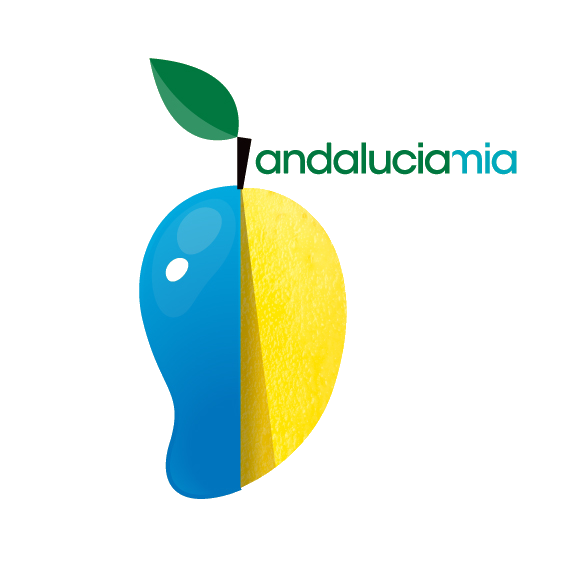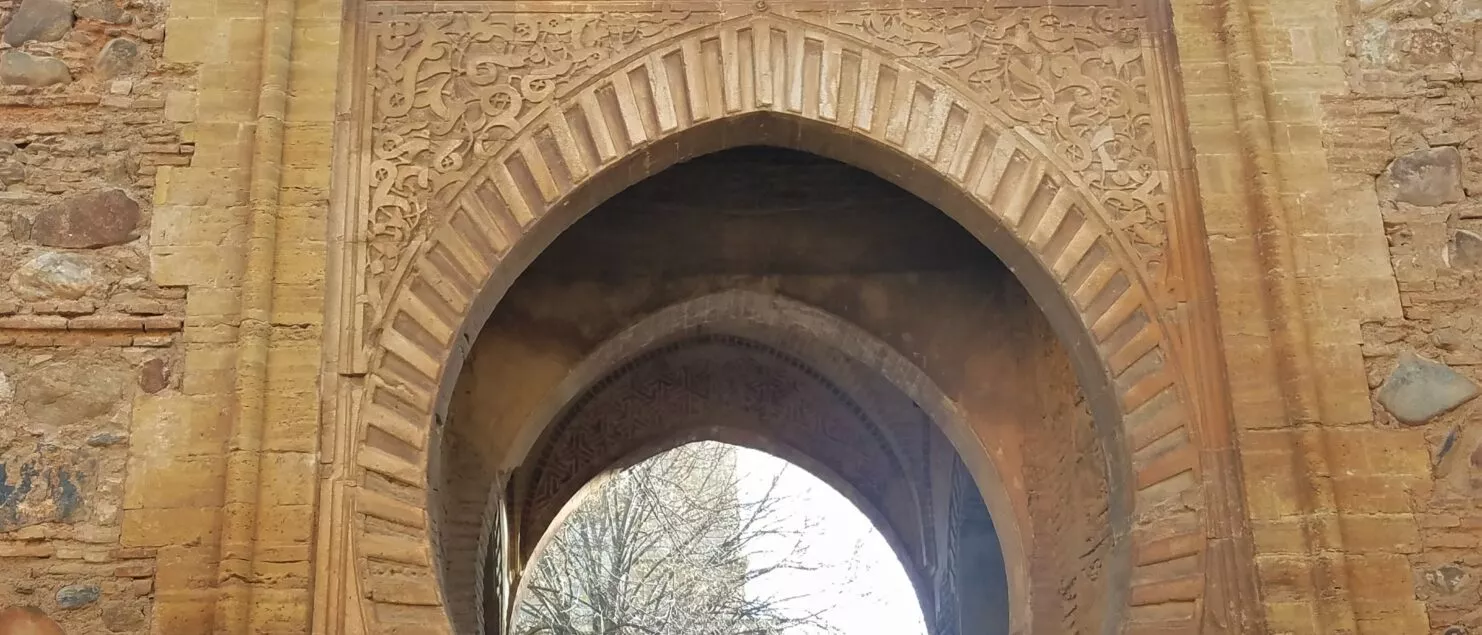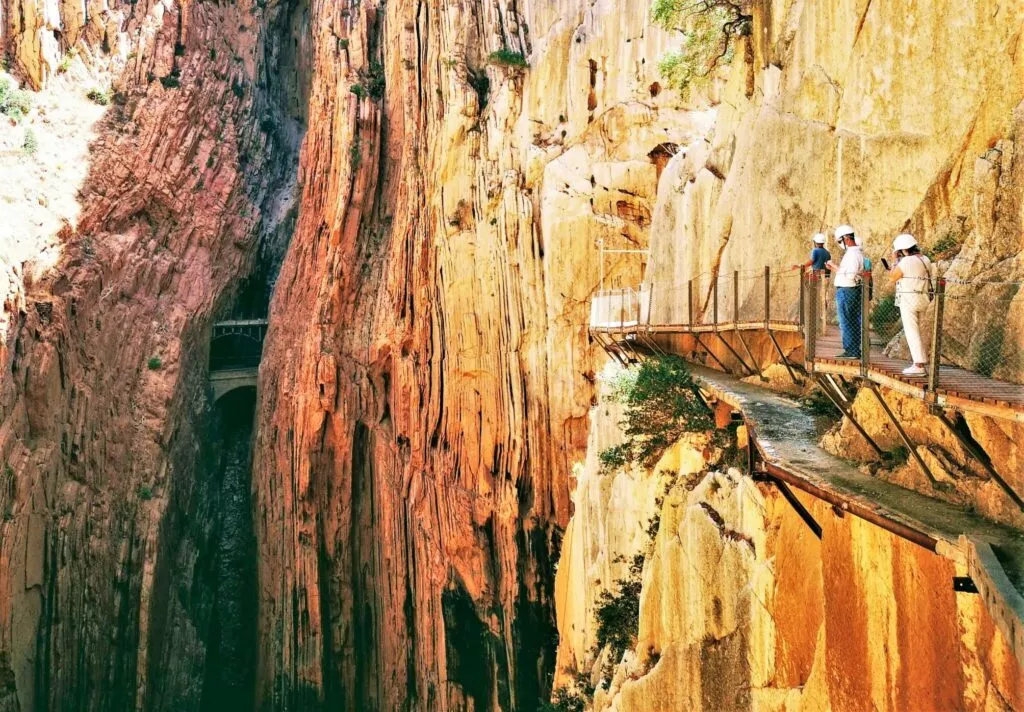Granada what to see in 2 days – the 15 places not to be missed
See and visit Granada, an enchanting city that invites you to dream
In this article you’ll find all the information you need to know about what to see in Granada in 2 days :
Please note: there’s so much to see in Granada that you’ll find other little wonders to see in the links to the Albaicin and Sacromonte neighbourhoods. Among the list of sites to see in Granada – a little further down the page – you’ll find two treasures: the last caravanserai in Andalucia and the only Hispano-Muslim madrasa still in existence in Spain.
- The origins of Granada
- The Unesco World Heritage Sites
- Where is Granada in Andalucia?
- What to see in Granada in 2 days?
- The map of Granada with the mentioned sites
- What to do in Granada
- Finding accommodation in Granada
- Some useful links (rent a car, other ideas for visits)
The origins of the city are interesting to know before visiting Granada
Granada has very ancient origins. The site was inhabited by the Iberians and then by the Romans.
It was during the Al-Andalus period that its development and legacy (legado Andalusí) were most important.
Here are some highlights from this period concerning Granada:
- Granada, under the name Madinat Elvira, was an integral part of the emirate and later the caliphate of Cordoba.
- When the Caliphate of Cordoba fell, it became the capital of a taifa. The Zirids, a Berber people from Kabylia, founded the first kingdom of Granada.
- The Zirids then gave it the name of Madinat Garnata.
- In 1090, Madinat Garnata was conquered by the Almoravids and integrated into the kingdom of Al-Andalus. This kingdom was later ruled by the Almohads and then by the Nasrids.
- In 1492, the city was conquered and integrated into the crown of Castile as a Catholic kingdom.
- Garnata becomes by hispanization of the word…Granada
Unesco World Heritage Sites to visit in Granada
Granada has 3 UNESCO World Heritage Sites. Each one is well worth a visit and time:
- The Albaicin neighbourhood
- Alhambra and its palaces
- The gardens of the Generalife (summer residence of the kings in Al-Andalus)
Where is Granada in Andalucia?
Granada is located in the heart of Andalucia at the foot of the Sierra Nevada.
What to see in Granada in 2 days ?
- The Alhambra
- Nasrid palaces
- Alcazaba
- Palace of Charles V
- Generalife
- Granada Cathedral
- The Royal Chapel, the Capilla Real
- The Bib-Rambla square
- The Alcaiceria market
- Monastery of San Jeronimo
- Madraza Palace
- Basilica of San Juan de Dios
- The Corral del Carbon
- Plaza de la Romanilla
- Federico García Lorca House Museum
- The Sacromonte neighbourhood
- Albaicin neighbourhood
- La Cartuja monastery
- Carmen de los Martires Garden
Note: at the following link you can book several private guided tours of Granada in English.
The Alhambra a must-see in Granada during these 2 days
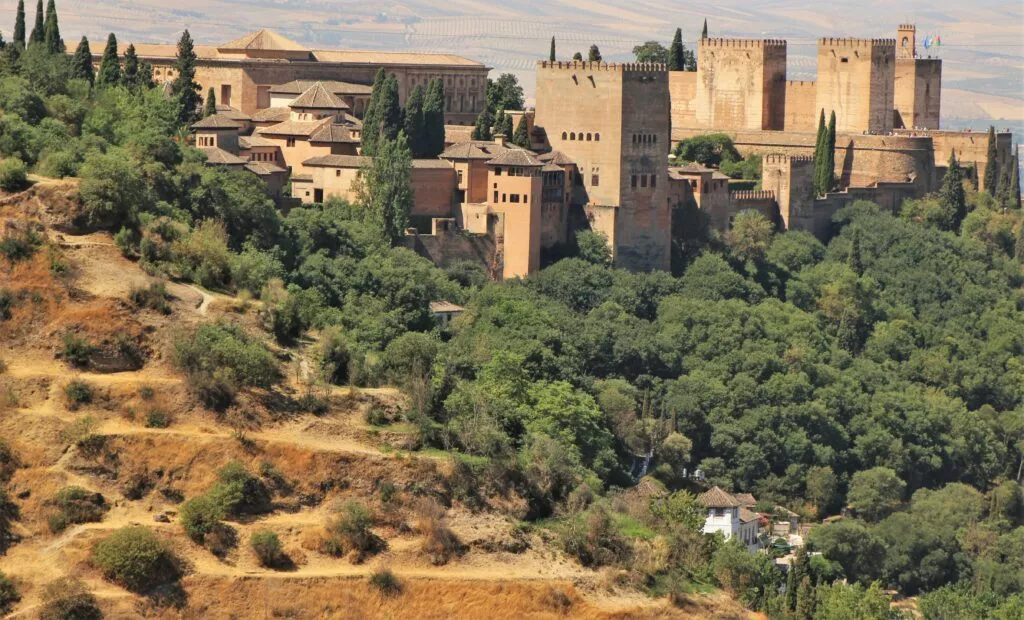
The Alhambra is a must-see. It is the most visited tourist site in Spain.
The Alhambra was built in the 13th century, at the beginning of the Nasrid era. The complex covers an area of 140,000 m². Its name comes directly from the Arabic al-Qalʻatu al-Ḥamrāʼ, i.e. “the red castle”.
The site comprises 4 distinct parts:
- The Nasrid palaces, the most beautiful of which are the Palacio de Comares, and the Palacio de los Leones. In the latter there is the famous courtyard of lions with its 124 carved marble columns all around.
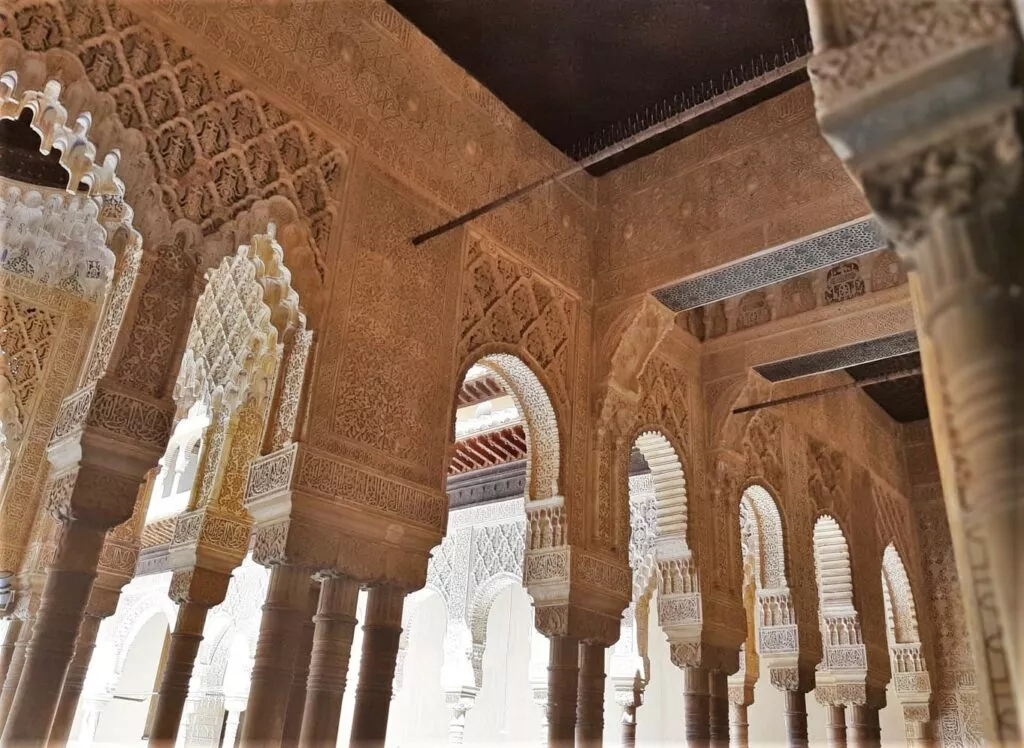
- The Alcazaba is the oldest part of the palace, built two centuries before the palaces. It housed the soldiers in charge of its defence. Alcazaba comes from the Arabic Al-Casbah which means citadel.
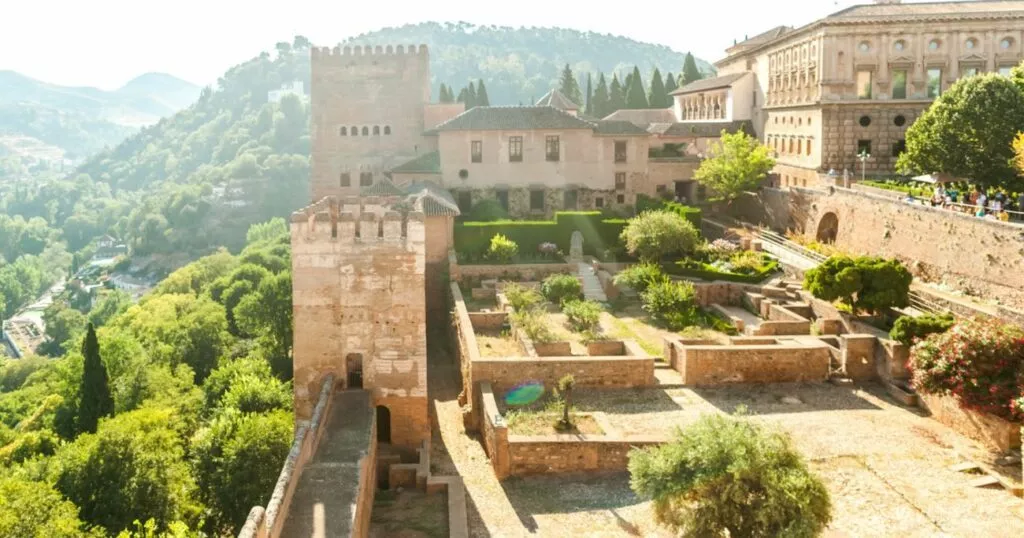
- The palace of Charles V, this building is later than the reconquista.
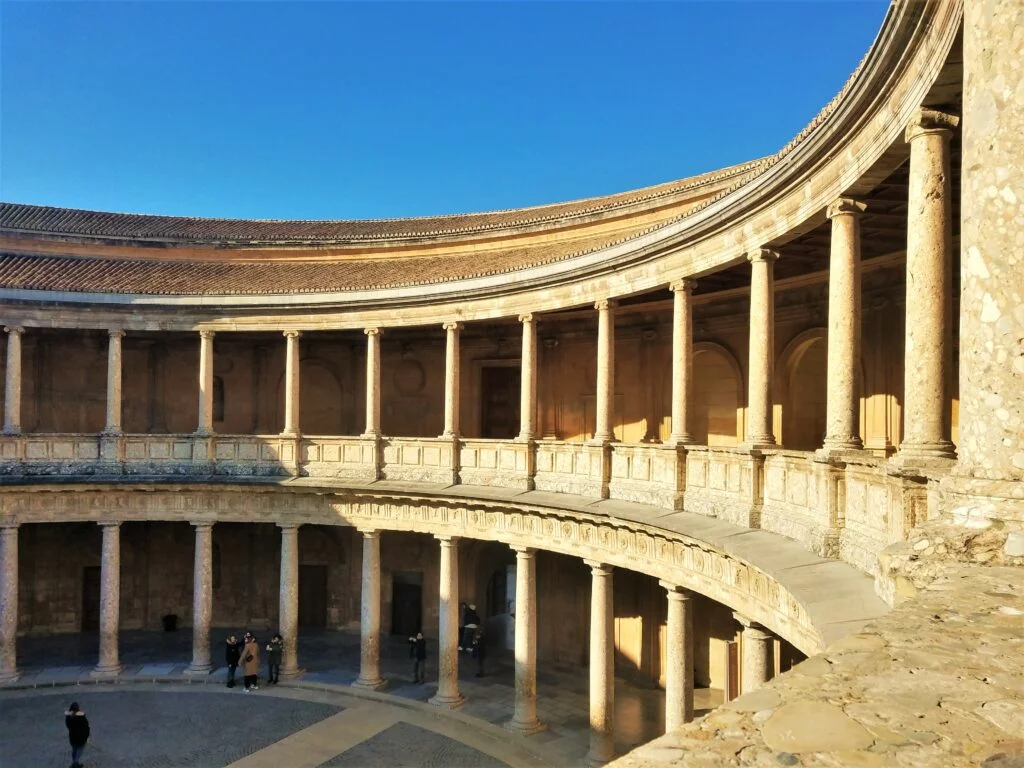
- The Generalife, which is located a little further up the hill. It is the former summer residence of the Nasrid kings from the 14th century.
The word generalife also comes from the Arabic ‘Jennat al Arif‘ and means ‘garden of the architect’. It consists of a magnificent villa and is best known for its beautiful flower gardens with ponds and fountains.
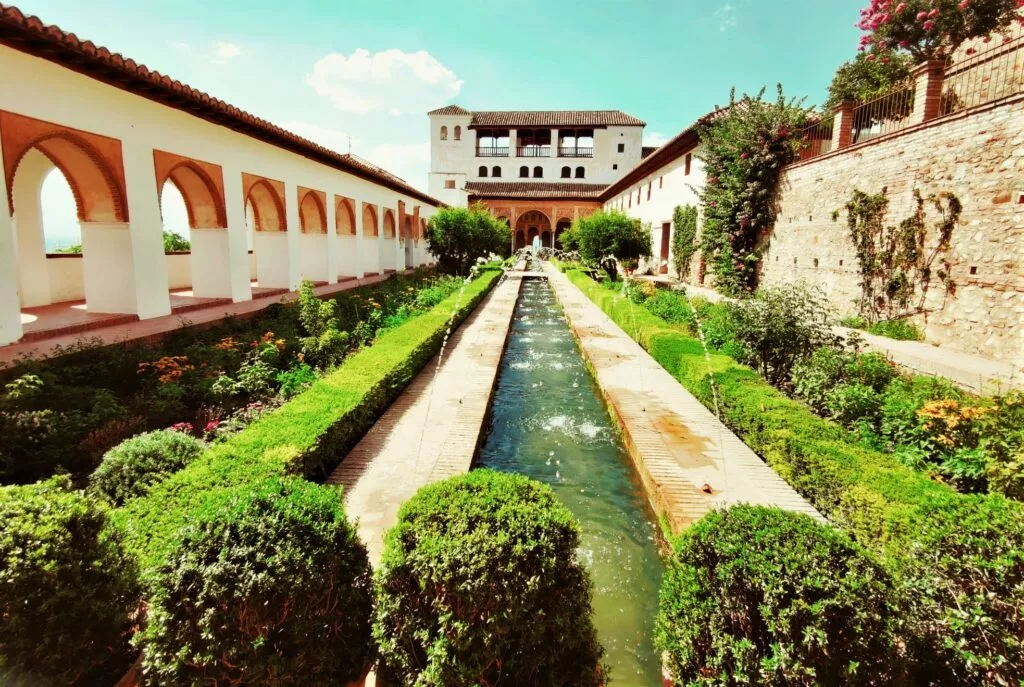
One last word about the Alhambra: the site is one of the 21 candidates to be recognized as one of the new 7 wonders of the world!
The Cathedral of Granada a wonder to see in Granada
This monument is also worth a visit. It will surprise you with its grandeur and its white interior. Its ceiling is also of incredible beauty.
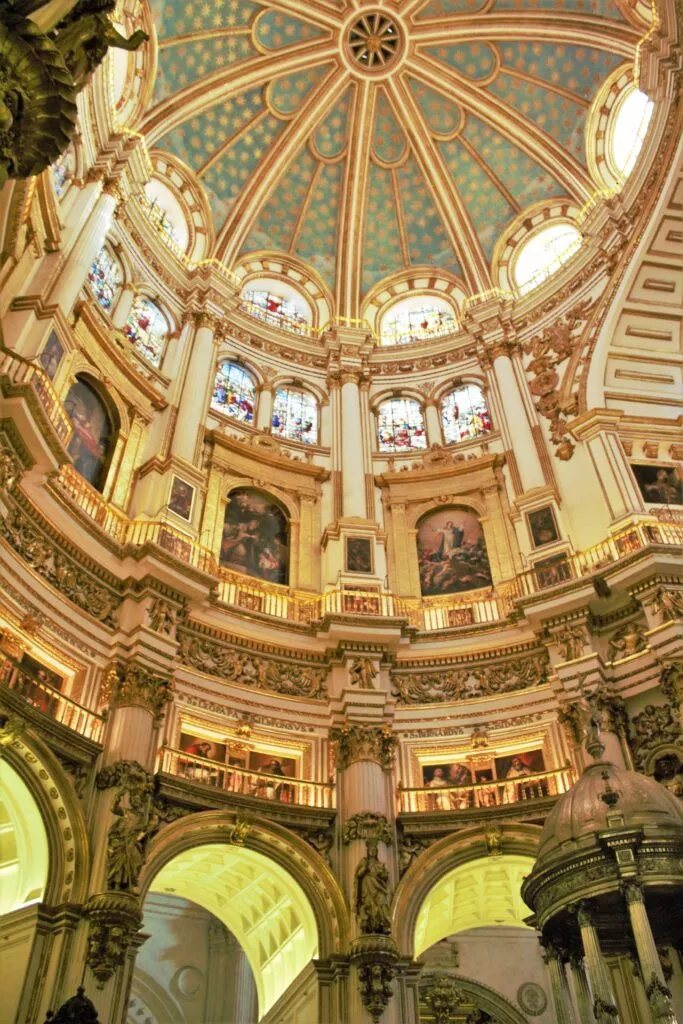
This cathedral is located on the site of the great Nasrid mosque. It was built in the 16th century and took almost 200 years to build!
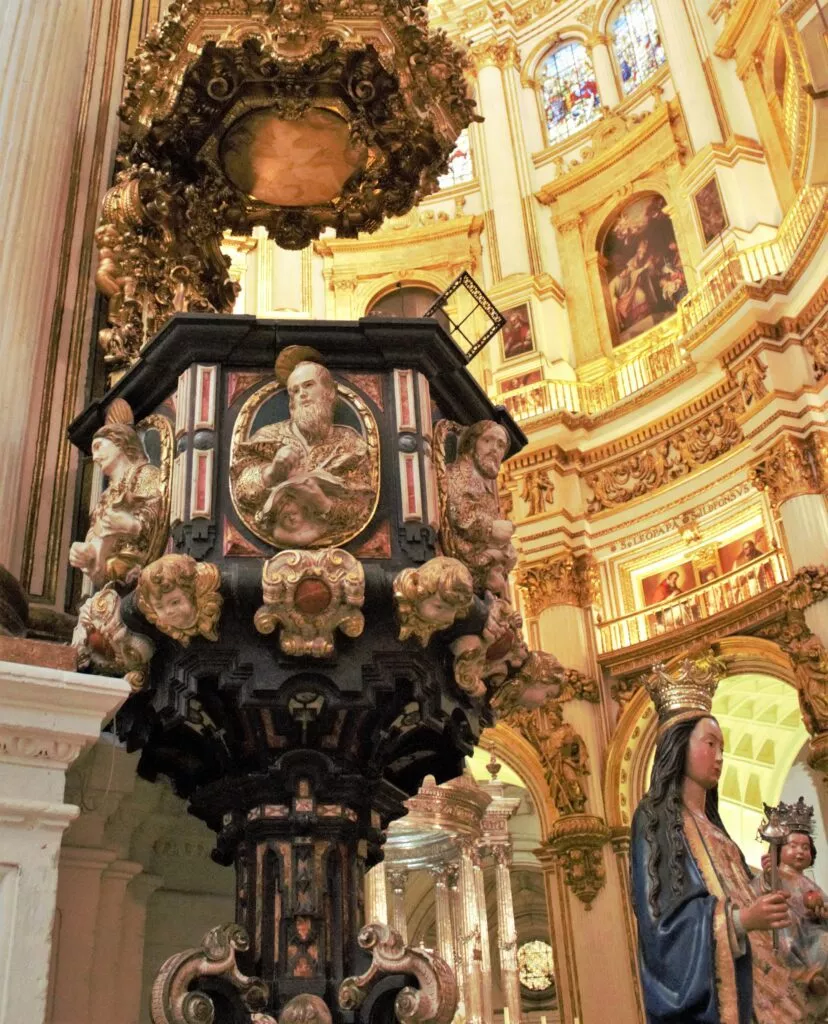
During your visit, you will be able to observe the presence of Renaissance, Gothic and Baroque styles.
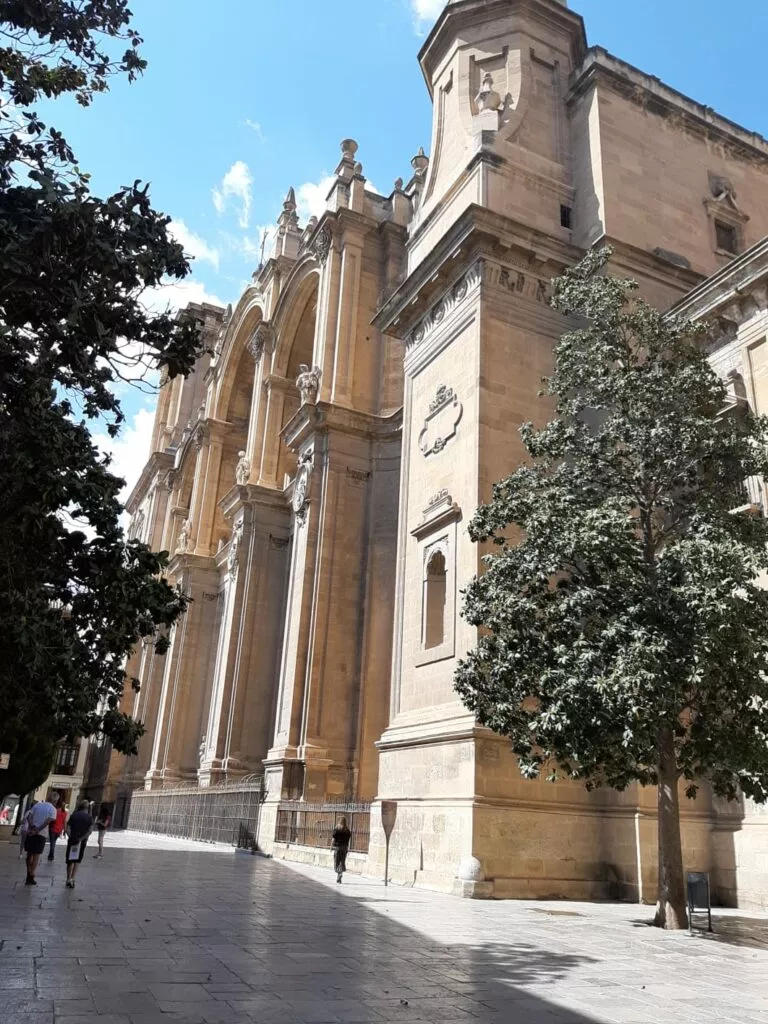
If you want a guided tour of the cathedral, here is the link. This tour also includes a guided tour of the Royal Chapel and entrance tickets for both monuments.
The cathedral is located in the “Christian city”, in the Centro-Sagrario district.
Royal Chapel – the Capilla Real – a wonder to discover during thes 2 days in Granada
The Royal Chapel is the mausoleum of the Catholic kings Isabel of Castile and Ferdinand of Aragon.
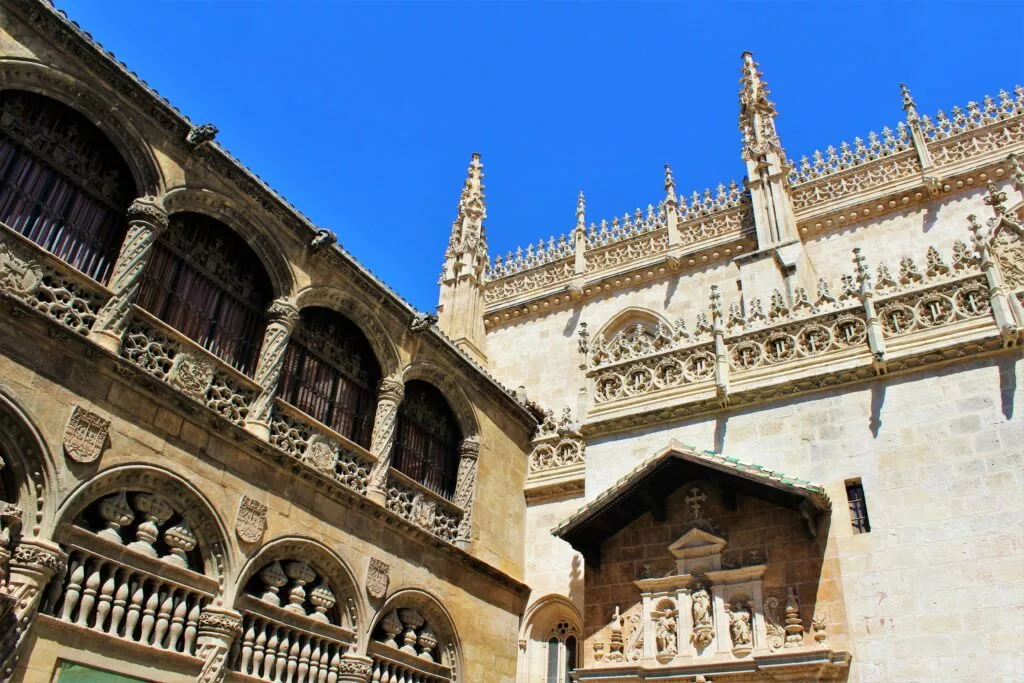
After the capture of Granada in 1492, the construction of the Royal Chapel was ordered so that the kings could rest there after their death.
A visit to this chapel allows you to see
- a crypt with the tombs of the Catholic kings
- personal effects of the kings
- a small museum with art objects.
The Royal Chapel is located opposite the Madrasa and next to the Lonja. This magnificent building, the Lonja (left side of the picture above) is the former seat of the Granada Silk Bank and the Commercial Exchange.
Bib-Rambla Square and the Alcaiceria Market
Despite its Arabic name, this square is in the heart of the “Christian city”.
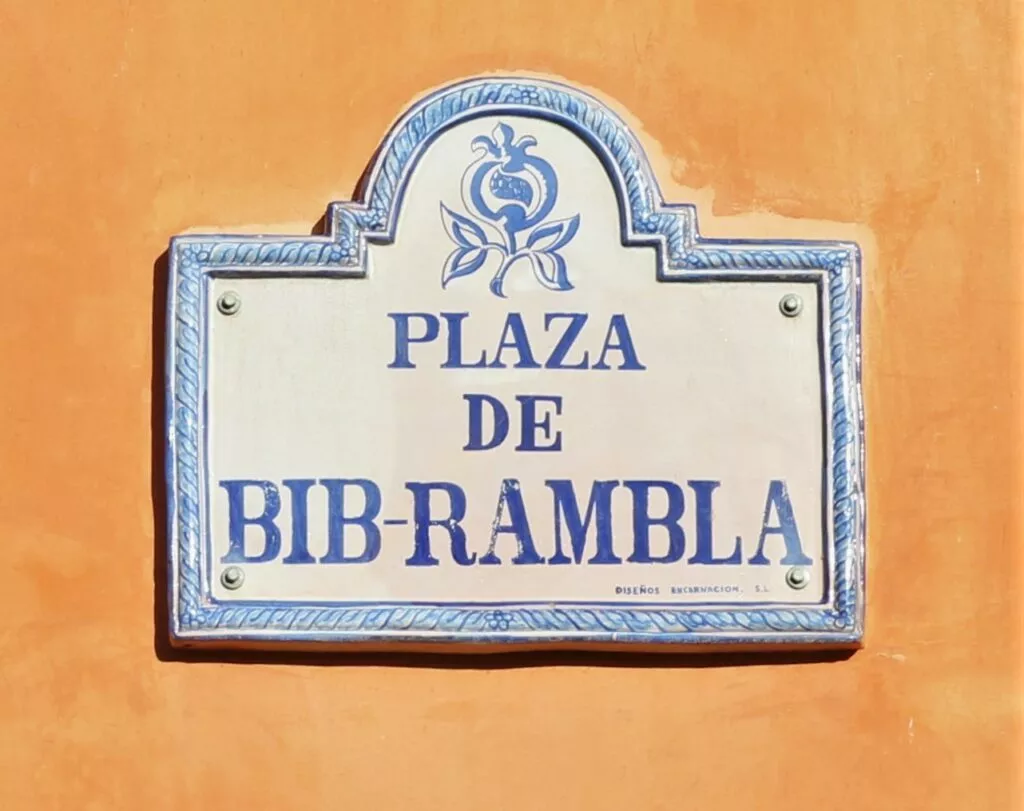
This is a large and beautiful square in the most commercial part of the city. An ideal place to take a break or have a drink.
The Alcaiceria
The Alcaicería is the old bazaar of Granada.
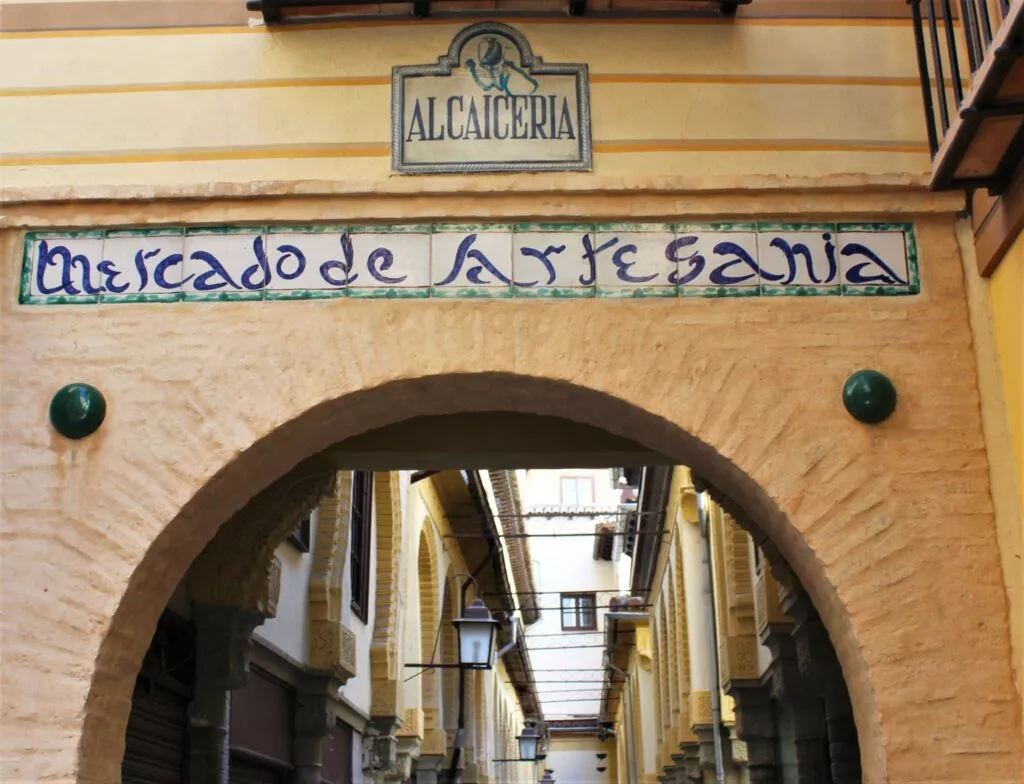
During the Muslim era, this souk was famous for its silk and spice trade.
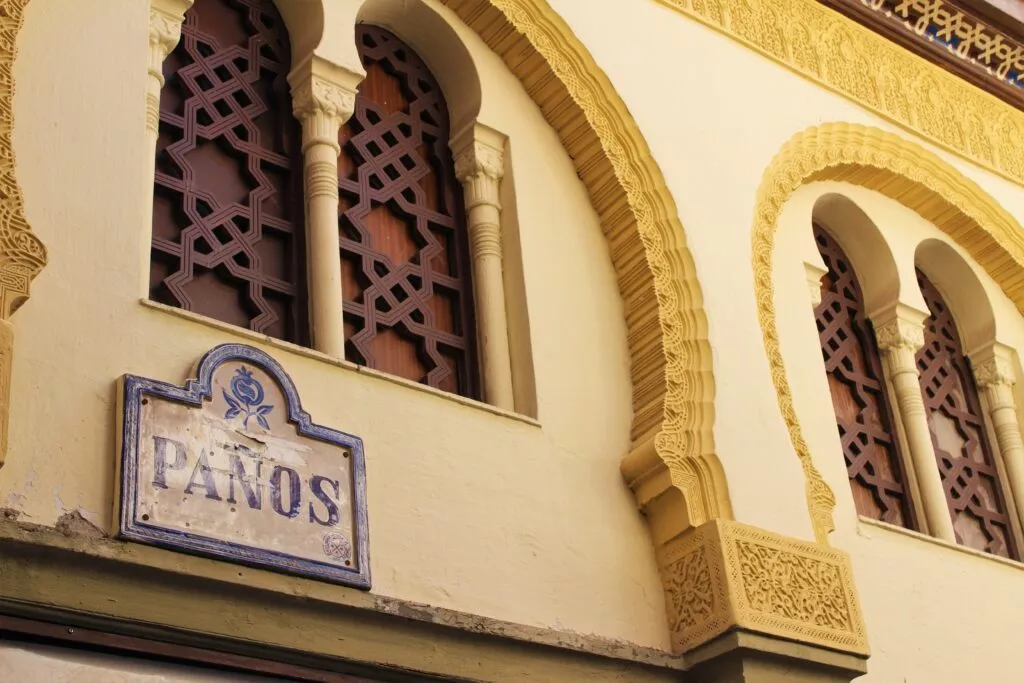
This district, which was very well preserved until then, unfortunately fell victim to a fire in the 19th century. It is therefore a replica of this quarter.
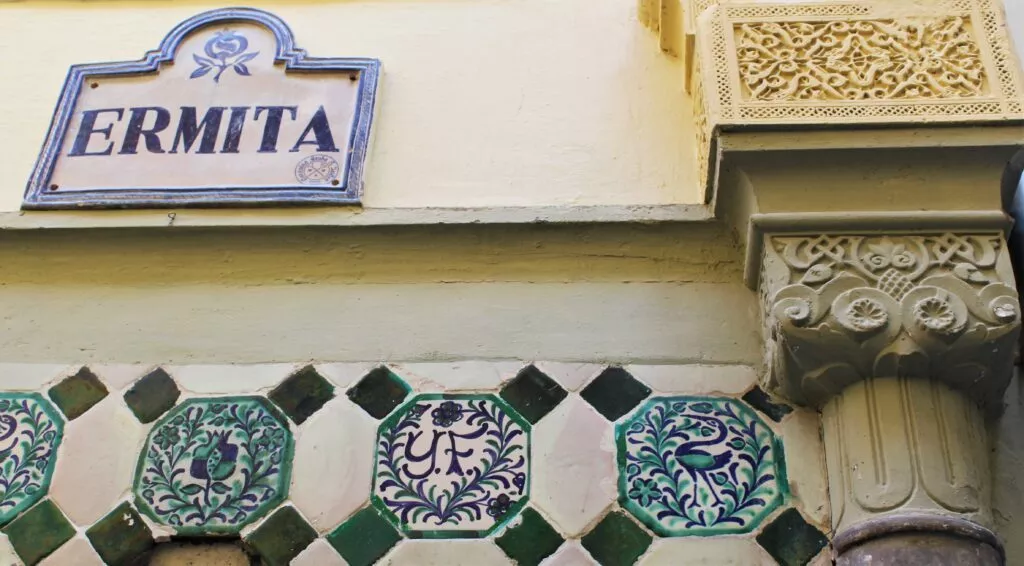
It is located next to the Bib-Rambla square.
Monastery of San Jeronimo
This monastery is located right next to the cathedral. You can reach it by the street “Calle San Jeronimo”.
In this monastery you will be surprised by the beauty of :
- its Renaissance-style cloister
- the numerous frescos in the church
- its altarpiece, one of the most beautiful in Spain
The Madraza Palace a hidden gem to see in Granada
This is one of my favourite monuments in Granada. It is the Madraza Palace, which is now part of the University of Granada.
It was built by Yusuf I in 1349 (in 750 AH).
But behind the name of the Madraza Palace is actually the Madrasa of Granada. At that time it was located next to the Great Mosque and the Alcaceria.
A madrasa was originally an orthodox school of higher learning, mainly for future lawyers, administrators and judges. From an architectural point of view, the school consisted of a patio with the teachers’ rooms and an oratory for collective prayer.
What to remember about the Granada madrasa
- the only Hispanic-Muslim madrasa that still exists today
- it was also called the Yusufiyya and the House of Sciences
- it was the first public university in Al-Andalus
- law was taught but also medicine and mathematics
- in 1500, it became the town hall of Granada
- today it belongs to the University of Granada and is also the seat of the Royal Academy of Fine Arts of Nuestra Señora de las Angustias
When you look at the façade today, it is impossible to guess what is behind it.
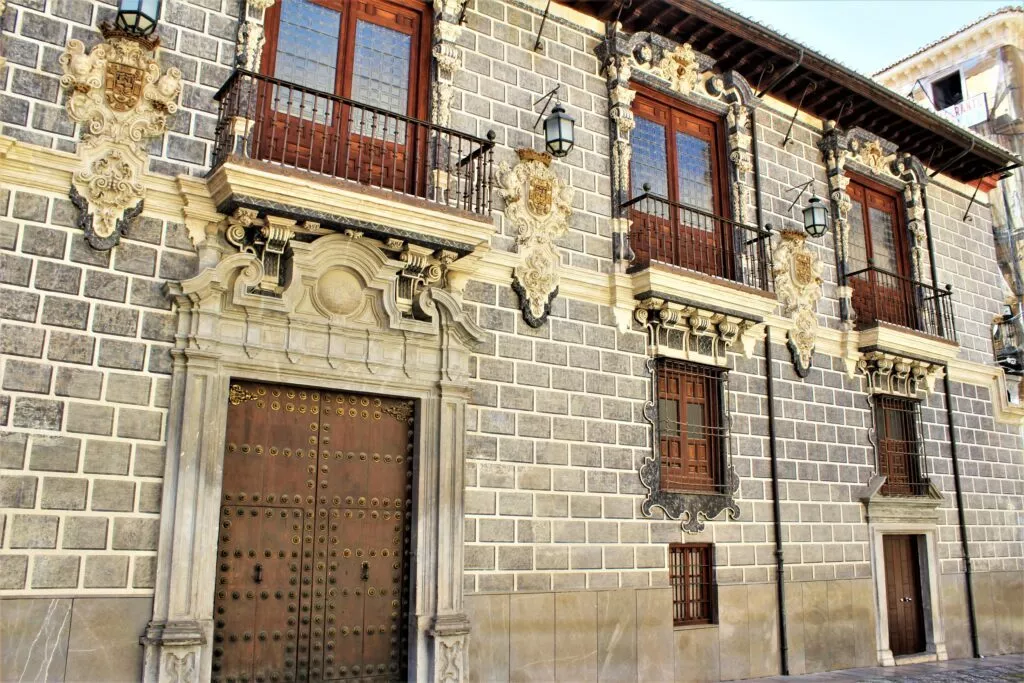
The entrance was originally made of white marble (it is kept in the city’s archaeological museum).
This old madrasa can be visited. The richly decorated ceiling and the oratory room with its magnificent mihrab are not to be missed.
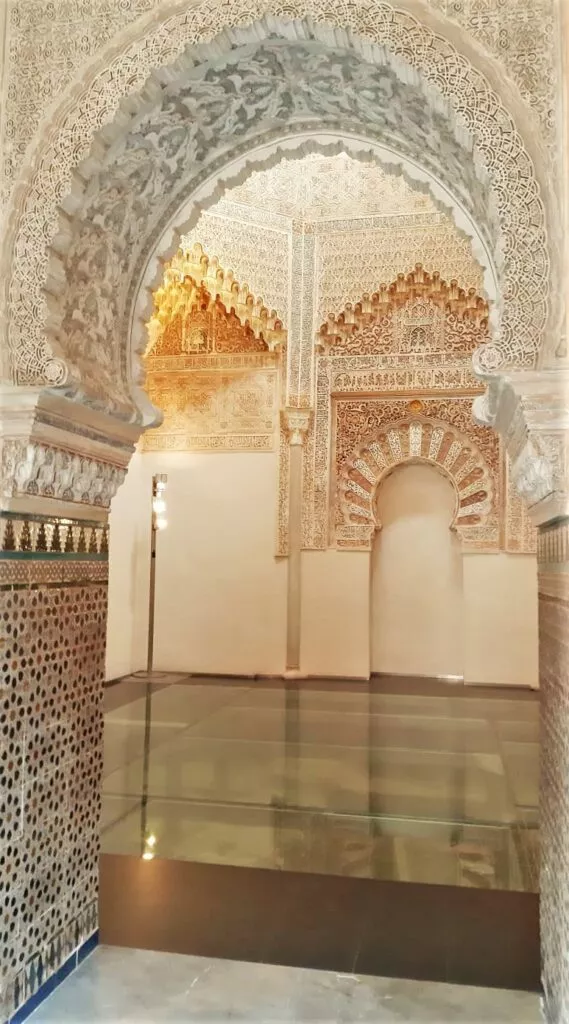
Notable historical fact :
The reconquest ended in 1492 but the madrasa functioned very curiously until 1500.
Indeed, Boabdil signed a secret agreement with the Catholic kings in November 1491, while the battle for the capture of Granada was still going on. In this agreement, ‘The Capitulations‘, it was stipulated that the Madrasa would continue to function as such after handing over the keys of the city to the Catholic kings
In 1500, the Catholic kings (Ferdinand II) no longer respected the agreement and decided to make it the town hall of Granada.
The Basilica of San Juan de Dios
The basilica is located next to the San Jeronimo monastery.
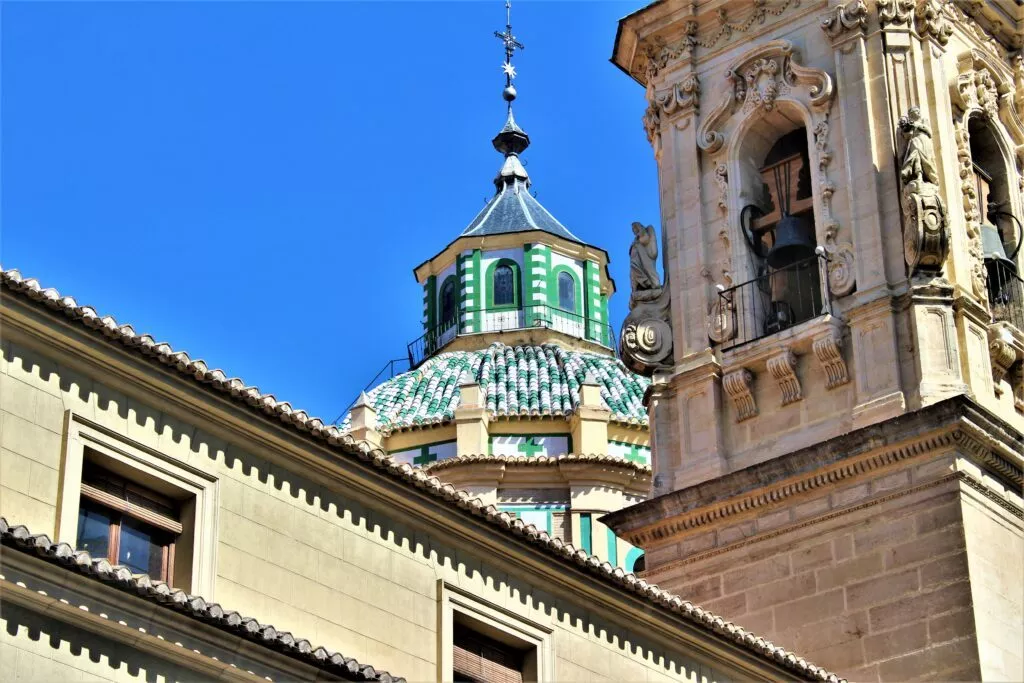
It was completed in 1759, in a baroque style. And if on the outside it looks very sober, the inside is quite different. The interior is indeed “very busy” with :
- Numerous paintings
- Wood carvings
- Large organs
- A large altar
- And finally with walls and ceilings covered almost entirely in gold
The Corral del Carbon a famous historic place to see in Granada
This is one of the places that takes me back in time the most, in Granada.
It is the Corral del Carbon, the old caravanserai of Granada, on Calle Mariana Pideno.
This old caravanserai dates from the 14th century, from the Nasrid period. It was built by Yusif I in 1336.
And it is the only one that has been preserved in all of Spain!
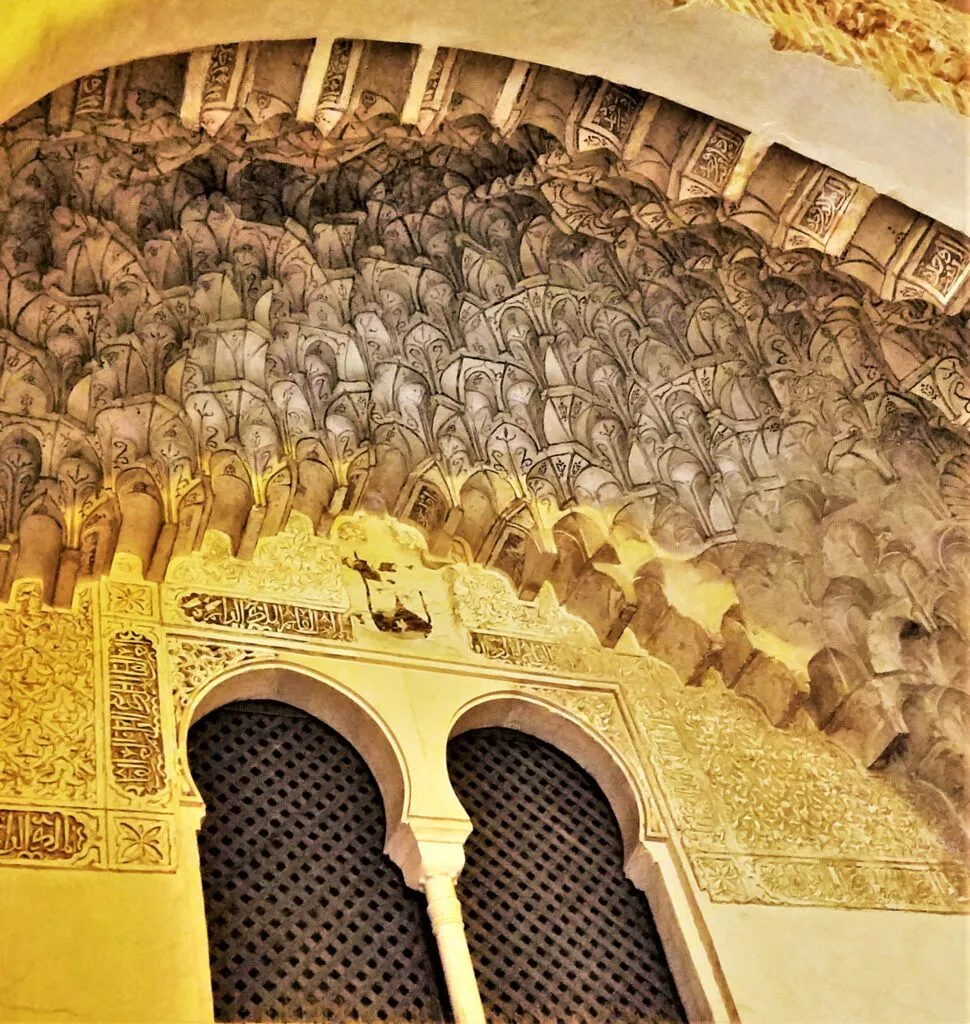
The edifice was originally called alfundaq al-yadida, and served as :
- A resting place for traders and animals
- A wholesale trade in grain
- Storage of grain
After the Reconquest, the site was used as a theatre before being transformed again to become the coal market…which gave it its current name corral del carbón (the coal yard).
What makes this site unique is of course its use and its history. But there is also its magnificent entrance door. The courtyard is very simple, but the front door is very richly decorated in the Nasrid style.
Plaza de la Romanilla
This square, close to the Bib-Rambla square, is one of the most popular squares in the city centre of Granada, with many restaurants and terraces.
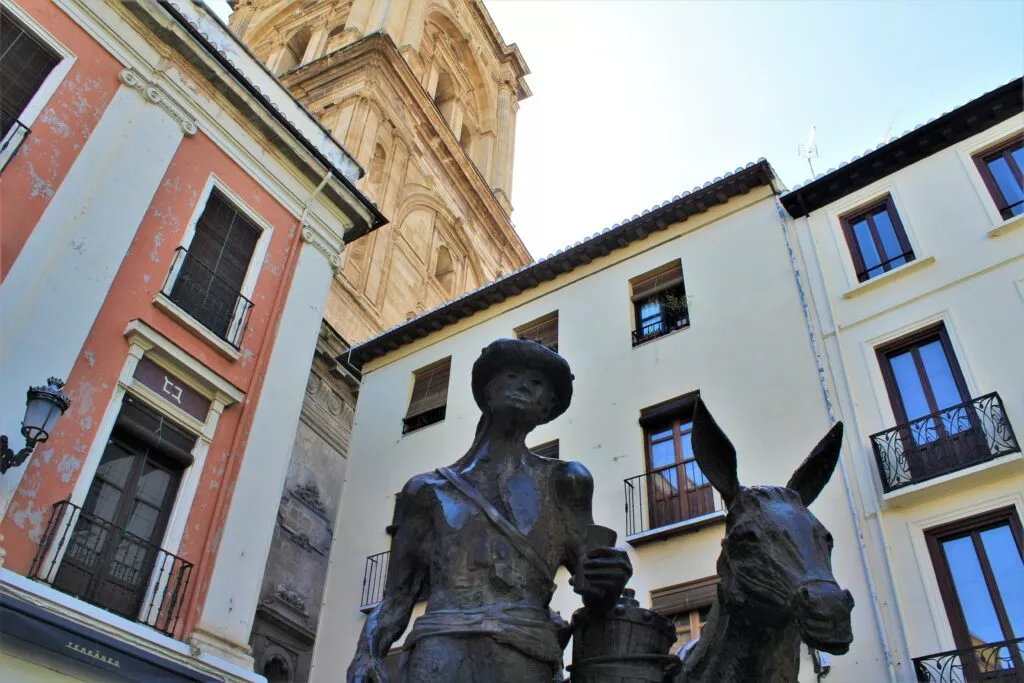
I enjoyed the charm of this square, and the sculpture that can be seen here with the cathedral tower in the background.
The Federico García Lorca house-museum – Huerta de San Vicente –
This is a very pleasant visit to the Federico García Lorca house museum. The house is the former family home of the Garcia-Lorca family.
This museum allows you to discover many personal objects of the greatest Andalusian poet (photos, drawings, paintings, manuscripts).
Gabriel García Lorca wrote some of his best works in this house (between 1926 and 19636), including Blood Wedding (Bodas de Sangre).
You can find the address of this house museum, which has remained in its original structure, here. The price of the ticket for the visit is 3 euros.
Historic neighbourhoods to see during your two-day visit to Granada
These two beautiful and authentic neighbourhoods will complete the visit to the centre of Granada. In the links below you can see all the monuments and places not to be missed.
- The Sacromonte district : the historical district of the gypsies of Granada and the cave houses !
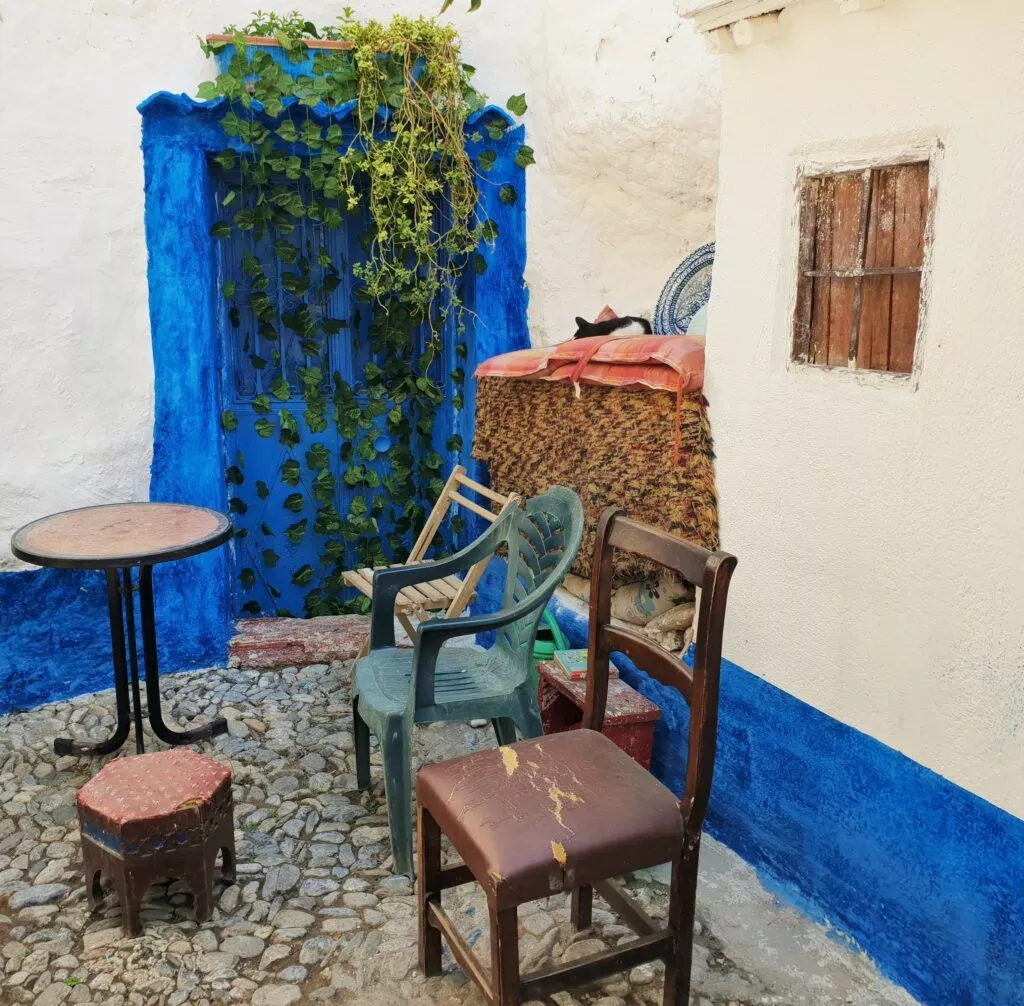
The Albaicin district, a UNESCO World Heritage site. This district offers us the possibility of a journey back in time to Al-Andalus.
There are 11 sites to discover in this area.
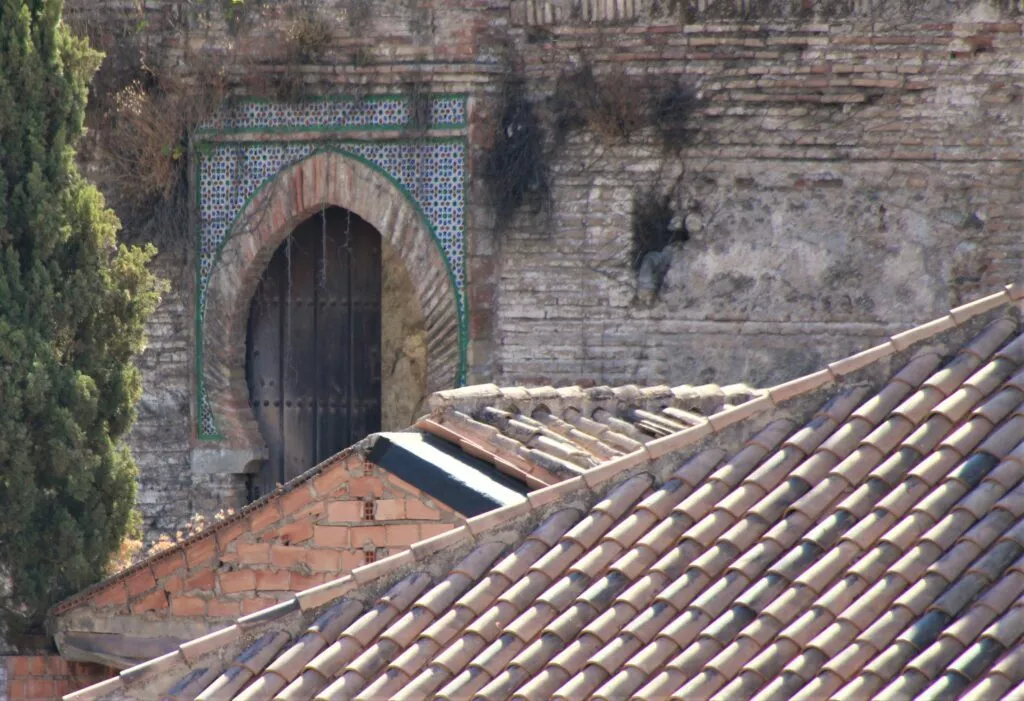
Next to it, crossing the river Darro, there is also the Realejo, the old Jewish quarter. This area is also worth a visit with its village atmosphere.
It’s a slightly forgotten neighbourhood, but one with incredible charm. On the other hand, it has retained fewer traces of its Jewish past than the Juderia in Cordoba or the Santa Cruz of Seville.
To finish on the essentials to see in Granada, here are 2 places where you can find either a little coolness or a lot of calm.
The monastery of La Cartuja
This monastery was almost never built. Its construction began in the 16th century and was completed in the 19th century.
It is considered one of the most beautiful in Spain.
Its name: Real Monasterio de Nuestra Señora de la Asunción de la Cartuja. It has this name because it was originally inhabited by a community of Carthusian monks (cartuja).
This is also the reason why this monastery was originally isolated, outside the city.
Carmen de los Martires Garden
Above the Realejo district and next to the Alhambra, you can find some coolness in a beautiful garden.
The Carmen de los Martires garden offers a walk through three different styles of gardens:
- A French garden
- The English garden with its 3-storey fountain
- The Nasrid patio with its labyrinth
And you can also walk along a small lake.
If you are in the western part of the Costa del Sol and would like to visit Granada, you can use the following link to book a tour from Málaga, Torremolinos, Mijas or Benalmadena.
Map to visit Granada with the mentioned sites
What to do in Granada?
After visiting Granada, its neighbourhoods and monuments, here is a great idea to relax in a beautiful place: book a place in the hammam of Granada.
The hammam is located not far from the Alhambra.
Note: here is also a link for those looking for outdoor activities to do in and around Granada.
Below are a number of ideas for activities and visits, categorised by theme. You can book them online today.
Bonus: all activities can be cancelled up to 24 hours before the scheduled date:
If you are on holiday on the “Costa del Sol Oriental”, the eastern part of Malaga.
From your place of stay between Nerja and Torre del Mar, a great guide will organise a day trip to discover the city of Granada with the Alhambra palaces and the Albaicin quarter. This tour is done in semi-private groups (2 to 8 people maximum).
To access the details of the trip, the price and to book online, just click on : Tour to Alhambra and the Albayzin from Nerja and Torrox.
Find accommodation in Granada for these 2 days
You can see live availability. Just after, you’ll find one original ideas to spend one or more nights in a unique place in the world!
Here is an idea for a unique accommodation if you have decided to visit Granada for 2 days or more
This is the Granada Parador. A luxury hotel located in…the Alhambra.
It is located in an old convent built in the 15th century. Its restaurant is also very famous.
Here is the link to get more information, pictures and to book : Hotel Parador de Granada
Even if you are not staying in the Parador, you can still have a coffee on the terrace. The terrace is located in the ‘Garden of Paradise’. You can enjoy a beautiful view of the Albaicin district and the Generalife!
In addition, not far from the parador you will find the old Arab baths of the Alhambra from the time of Al-Andalus.
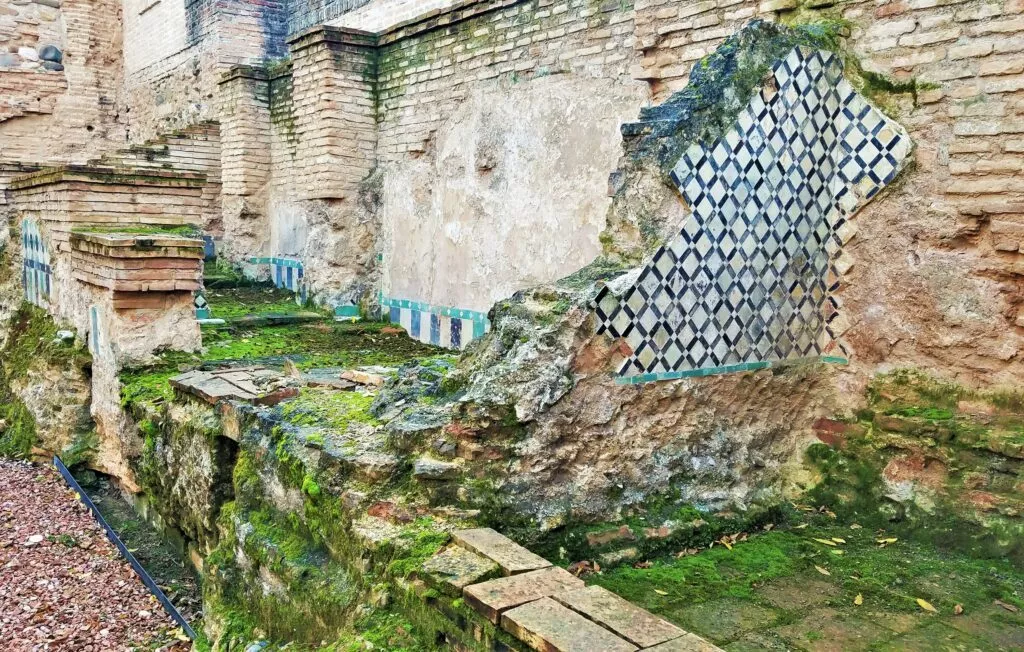
And for lovers of spanish cuisine here a dedicated formula in this link : 7 Day Spanish and Cooking Course in the City of Granada
Some useful links
Easy and economical bookings
If you are in Andalucia as part of a tour with several major cities to visit, here are some links that may interest you:
Seville
Seville, the capital of Andalucia, is a city full of treasures to discover and monuments to visit.
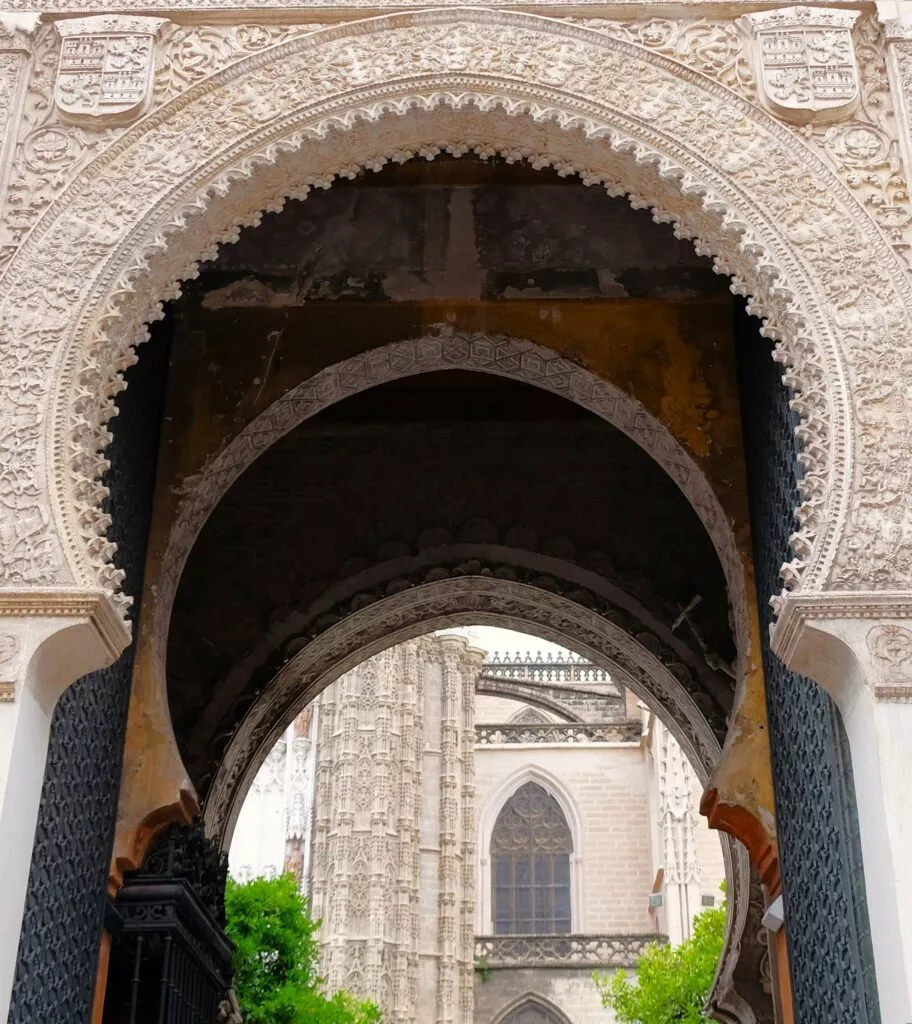
Here you will find everything you can see in Seville in 3 days. And for those who will stay longer you will also find information on secret Seville and the Santa Cruz and Triana districts.
Cadiz
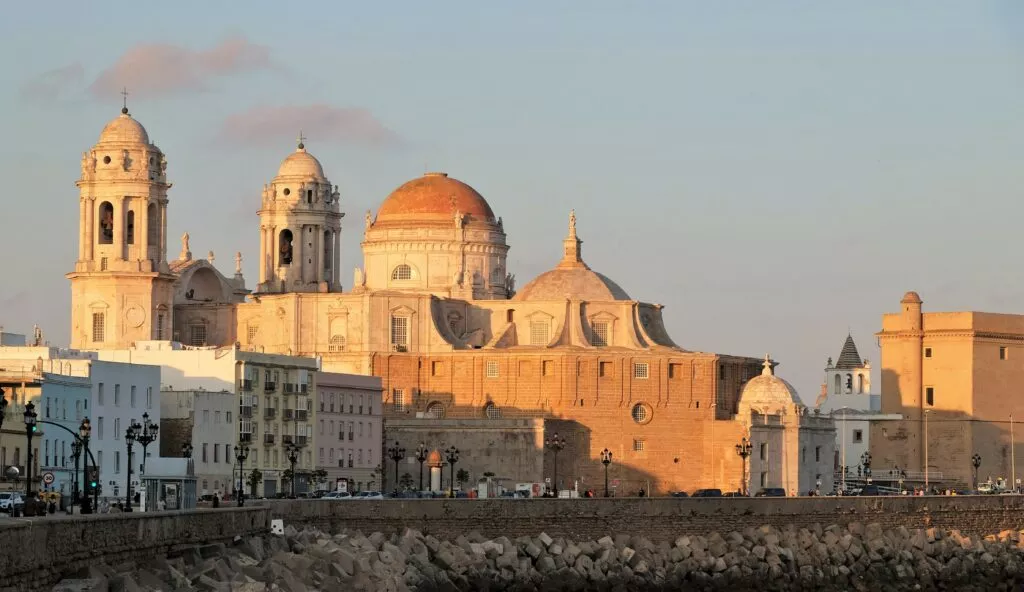
Visit Cadiz, a city with an incredible past and great beauty, on the Costa del la Luz.
Malaga
When you reach the Costa del Sol you will find in this link all must-sees in Malaga :
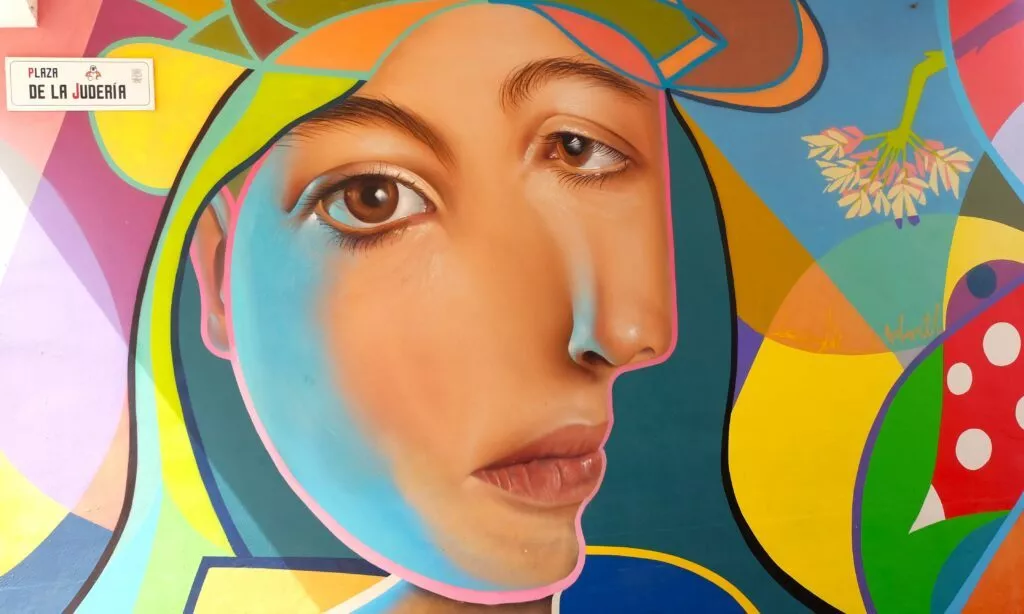
Cordoba
And of course, visit Cordoba, the caliphate city, and the Juderia district
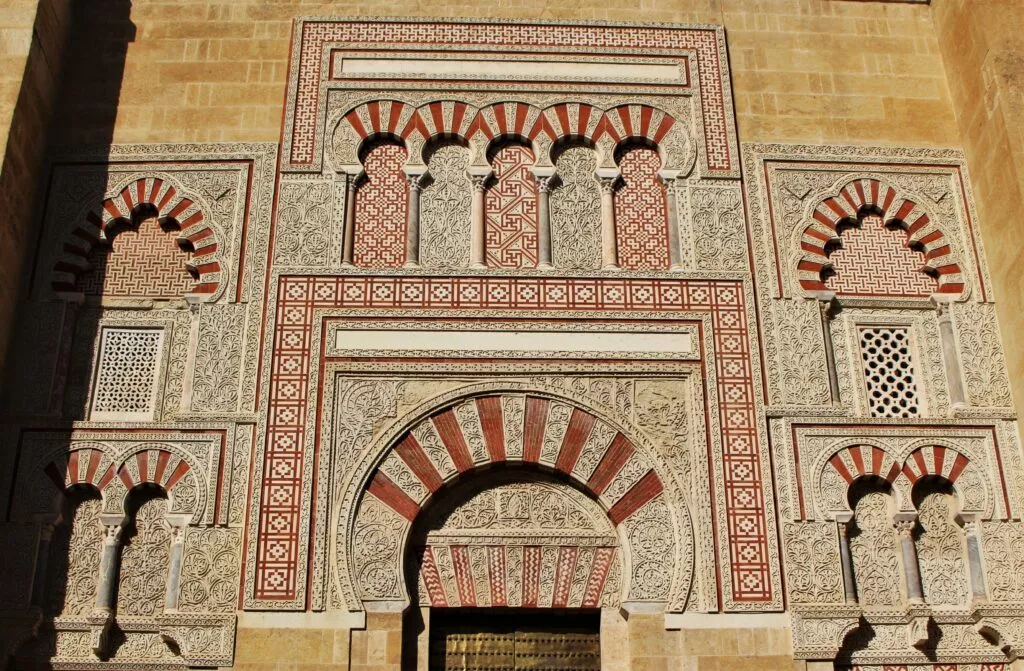
In the following link you will find other beautiful sites to discover, see the blog articles about Andalusia.
Here is the link to receive our newsletter from the blog andaluciamia.com
Here are some more photos taken during the visit to Granada
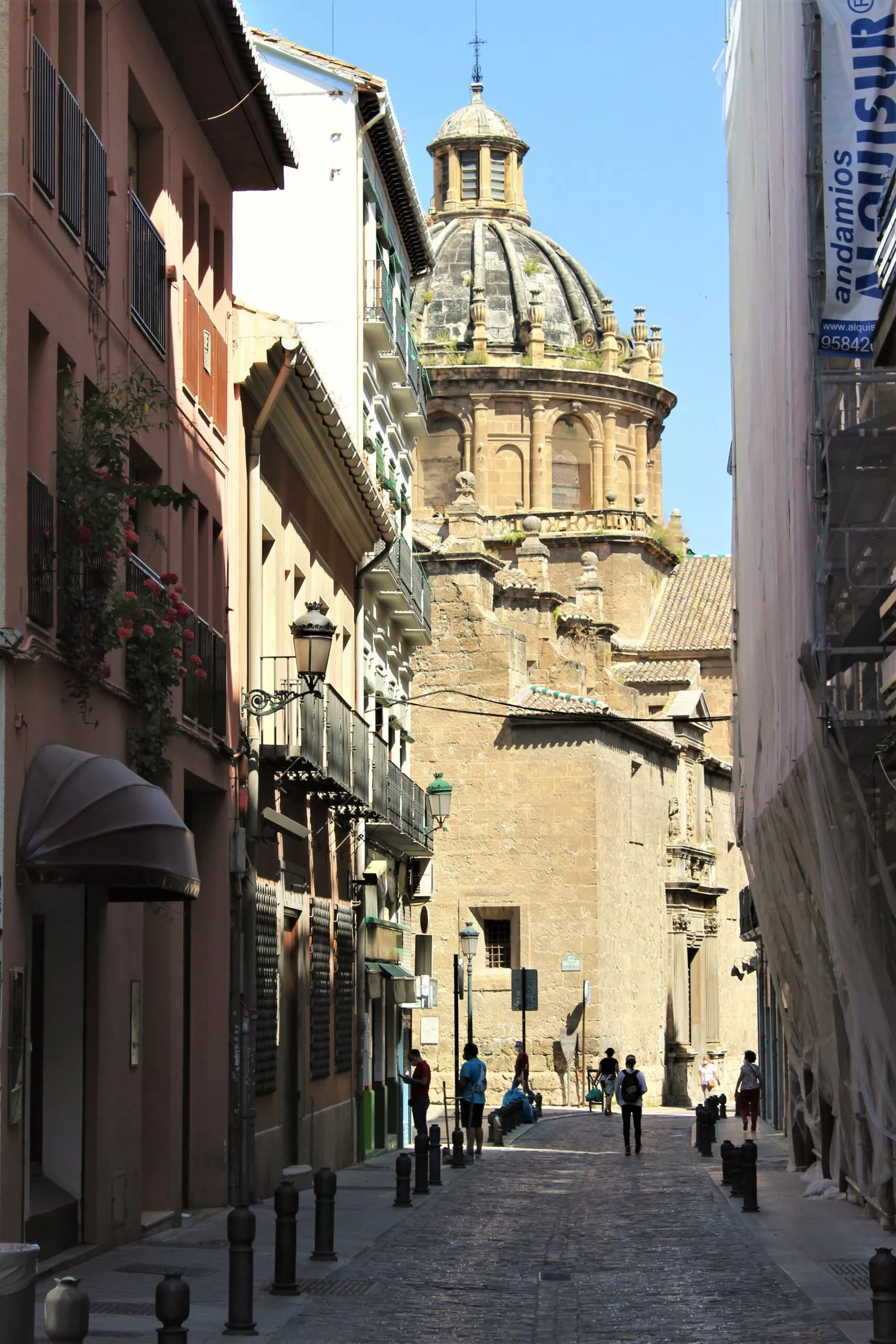
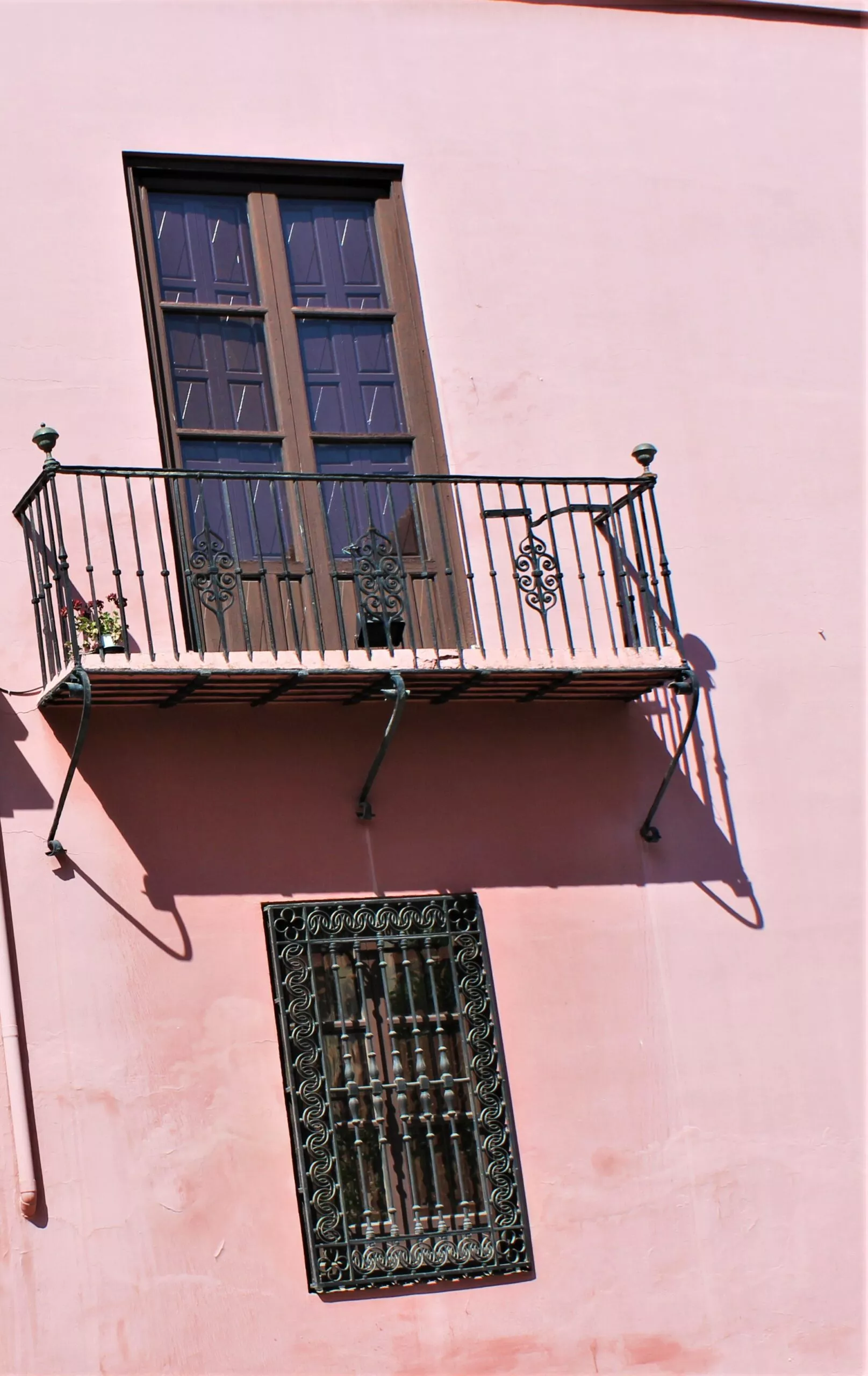
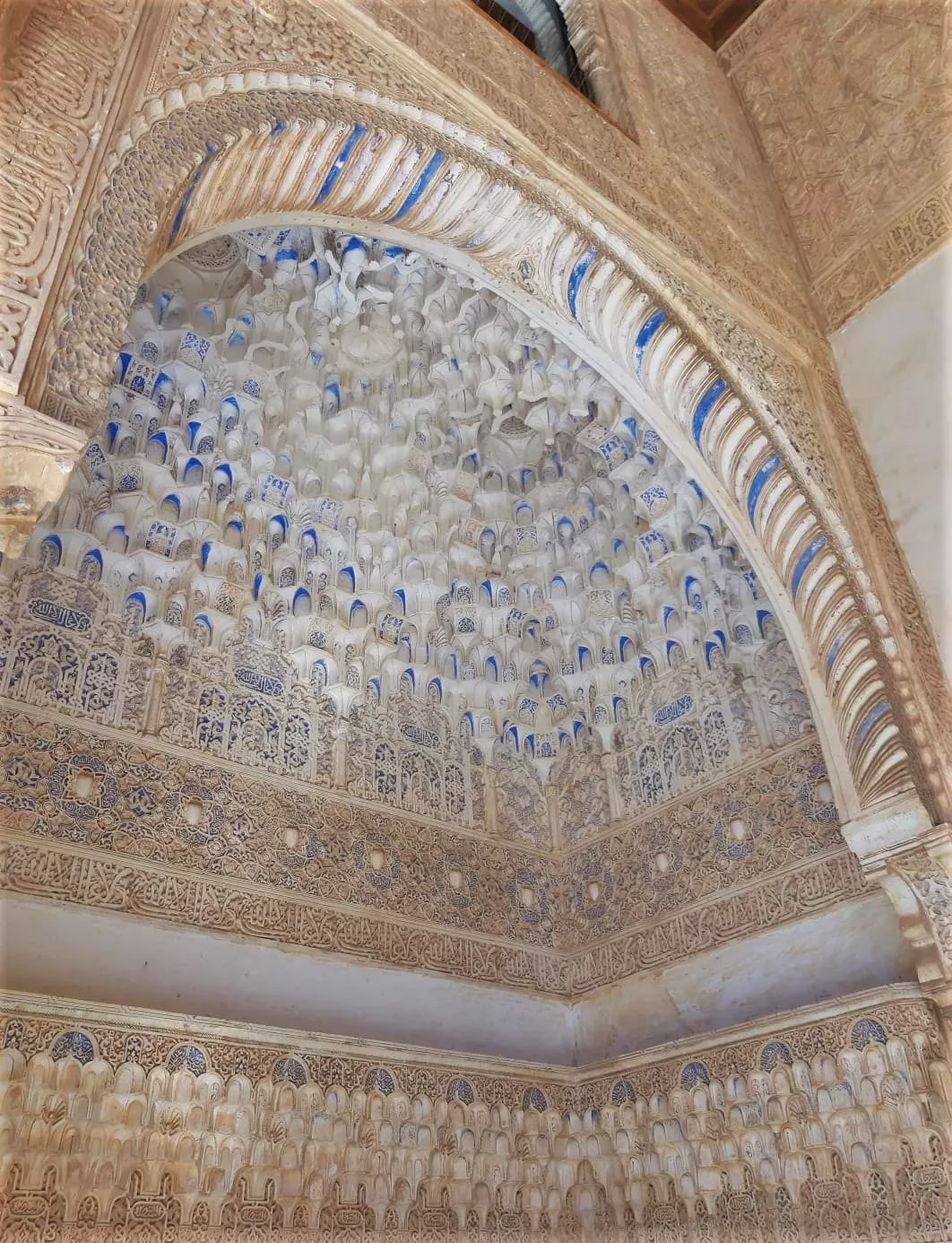
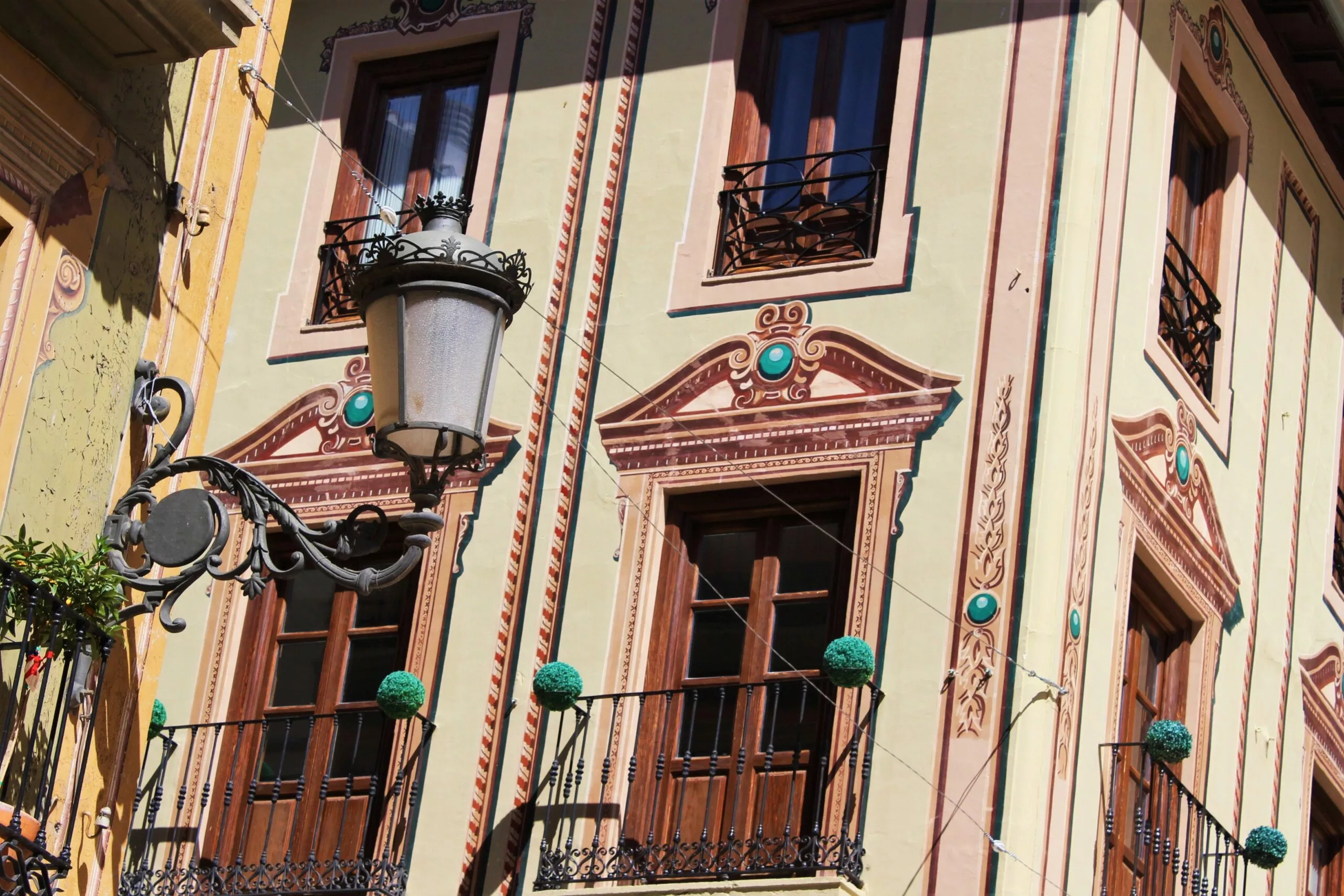
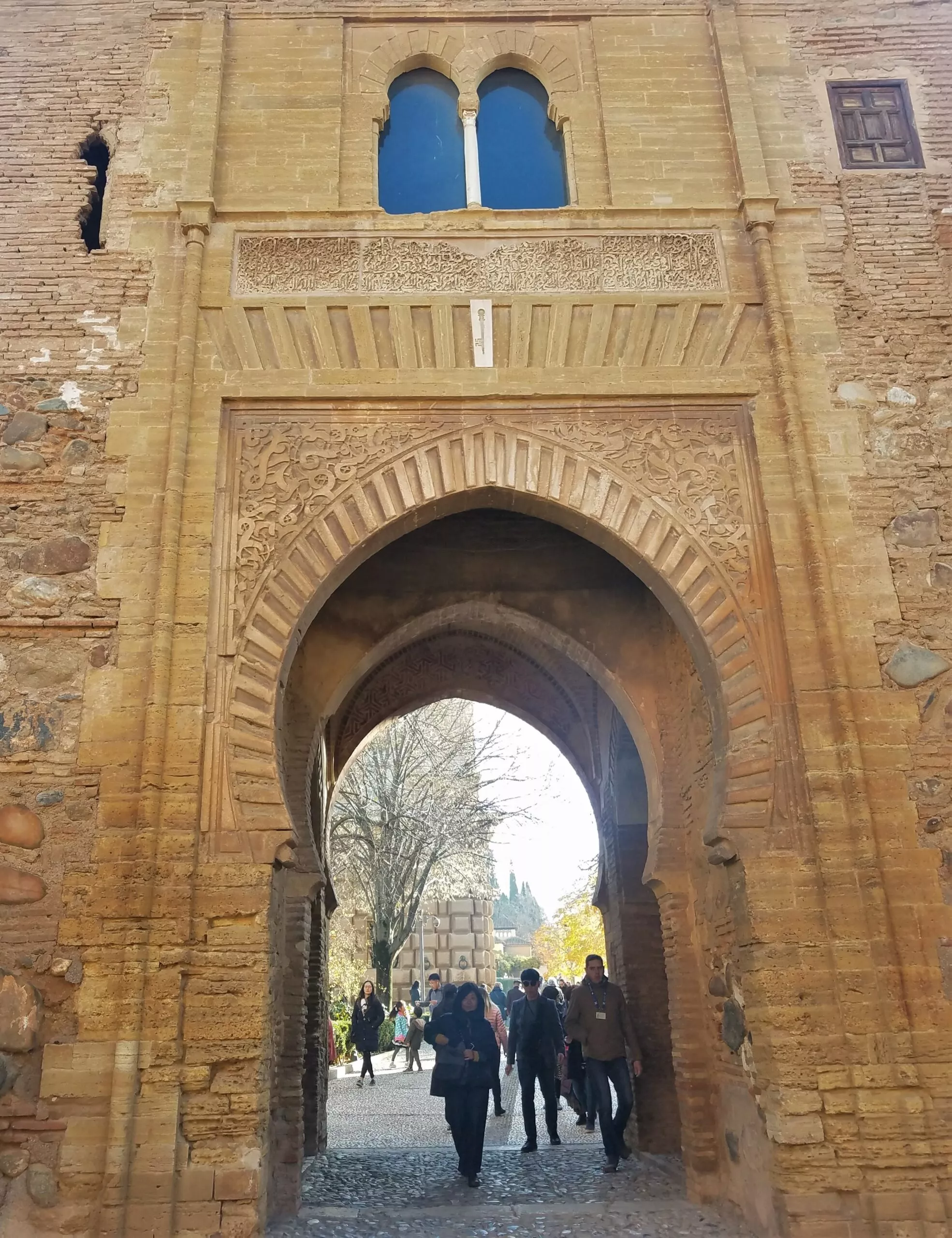
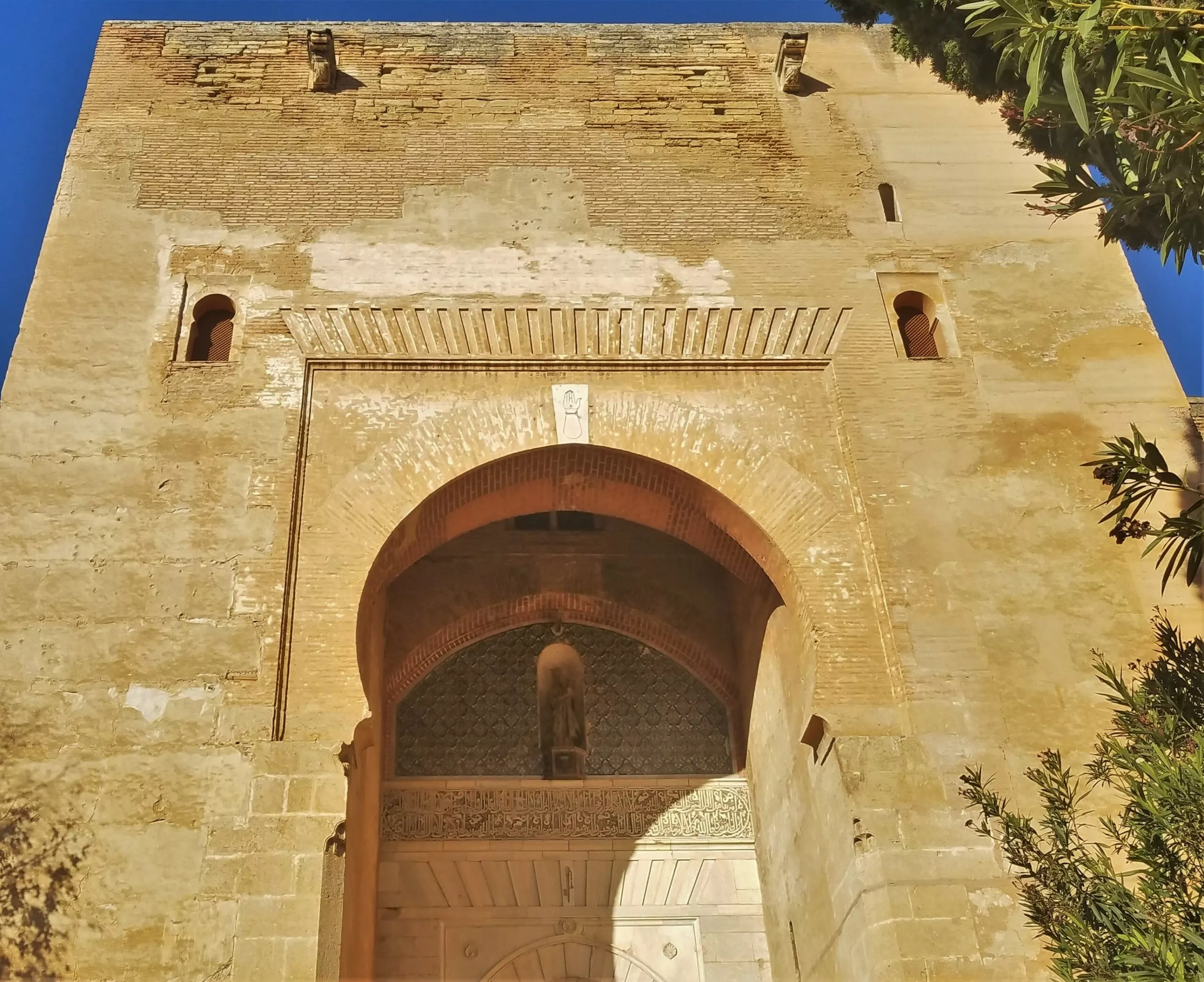
The latest articles on Andalucia
-
Interactive map of Andalucia with best places to see
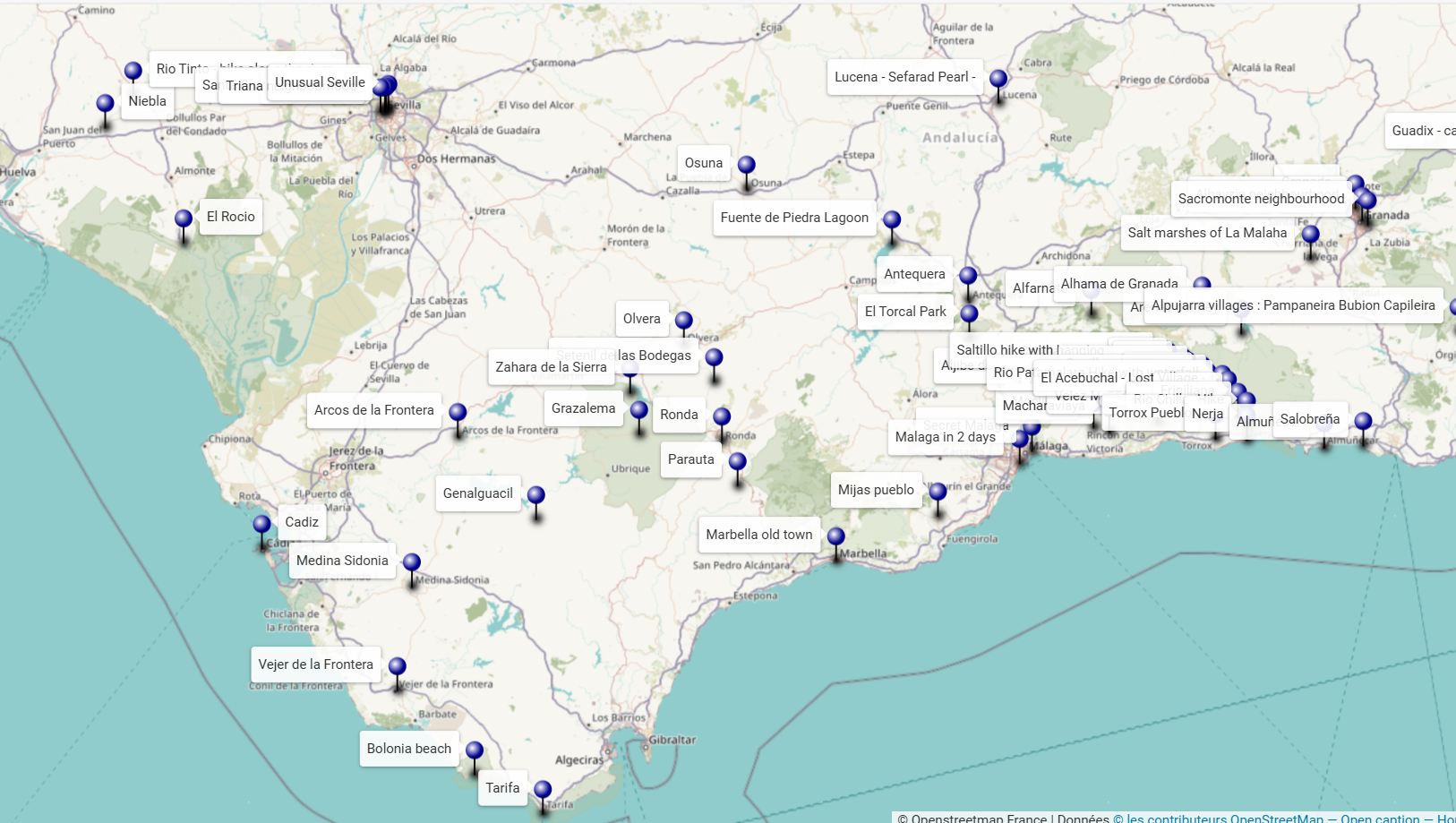
An interactive map of Andalucia to discover the sites to see around your holiday destination or to prepare a tour or road-trip.
-
Andalusia off the beaten track : 18 gems
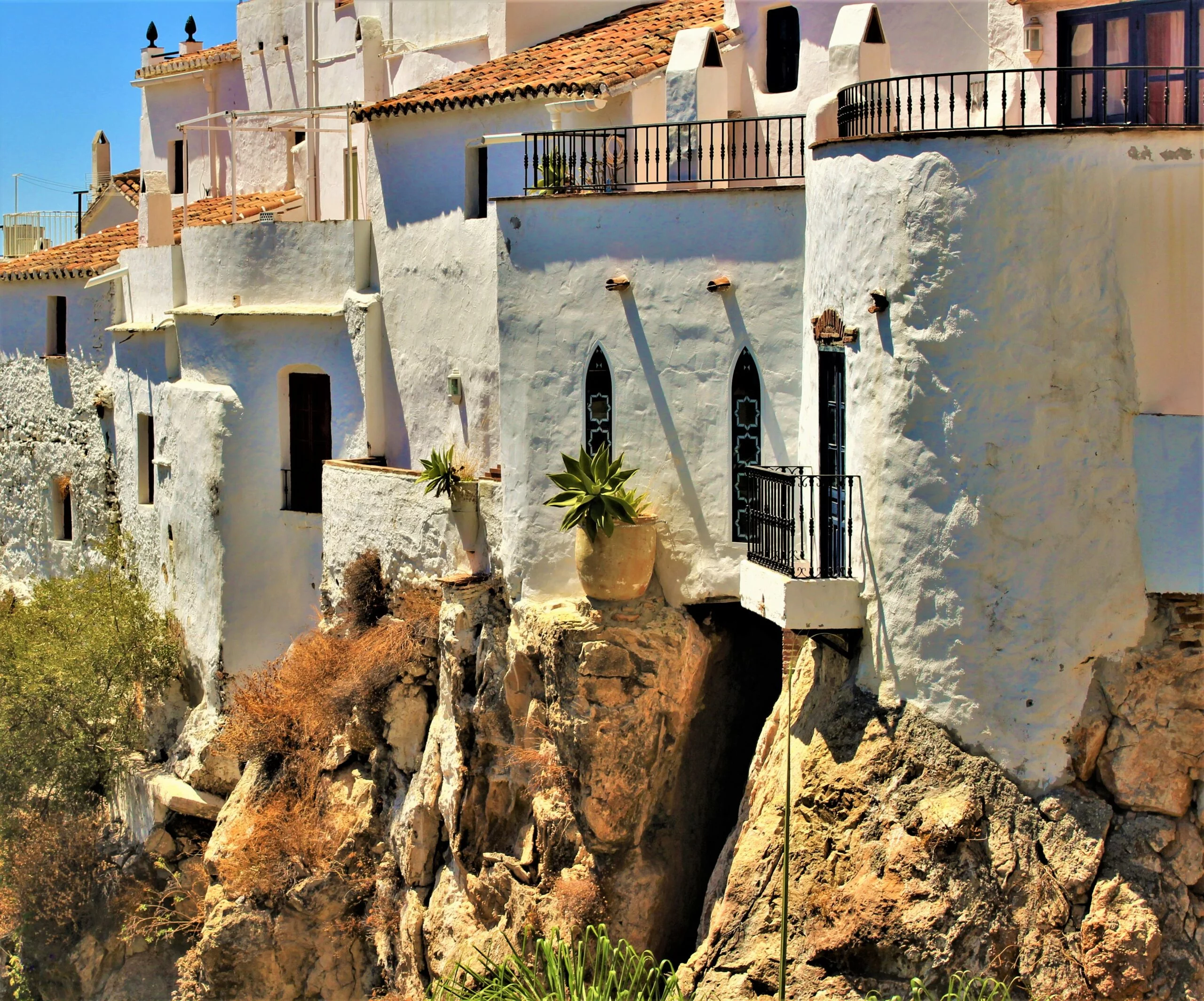
Let’s immediately set off to discover an Andalusia off the beaten track. There are many wonders to discover.
-
19 Most beautiful white villages in Andalusia
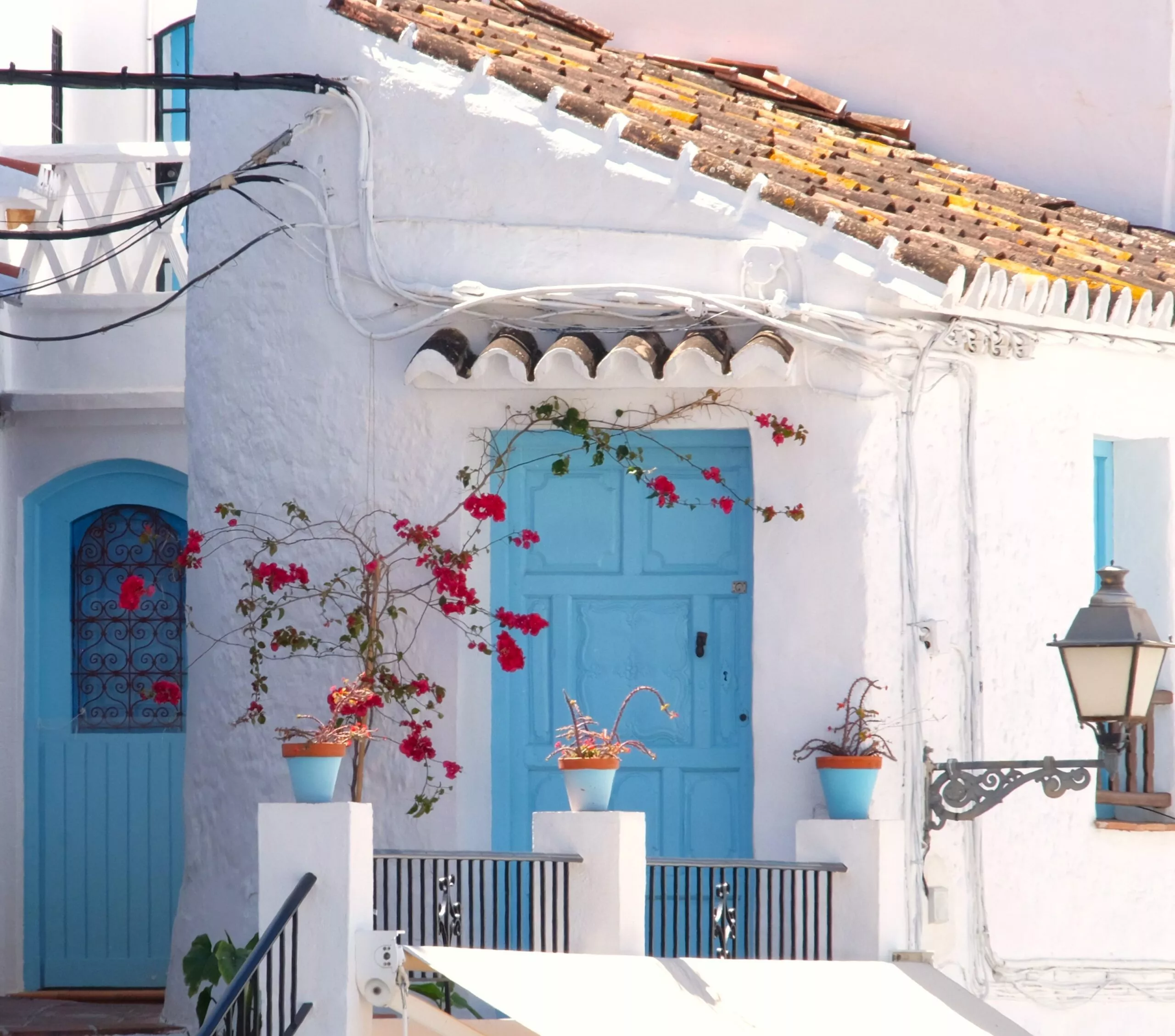
Discovering the most beautiful white villages of Andalusia. These villages are the only ones to be part of the Pueblos más bonitos de España.
-
Unusual Andalusia – 15 Very Surprising Places –
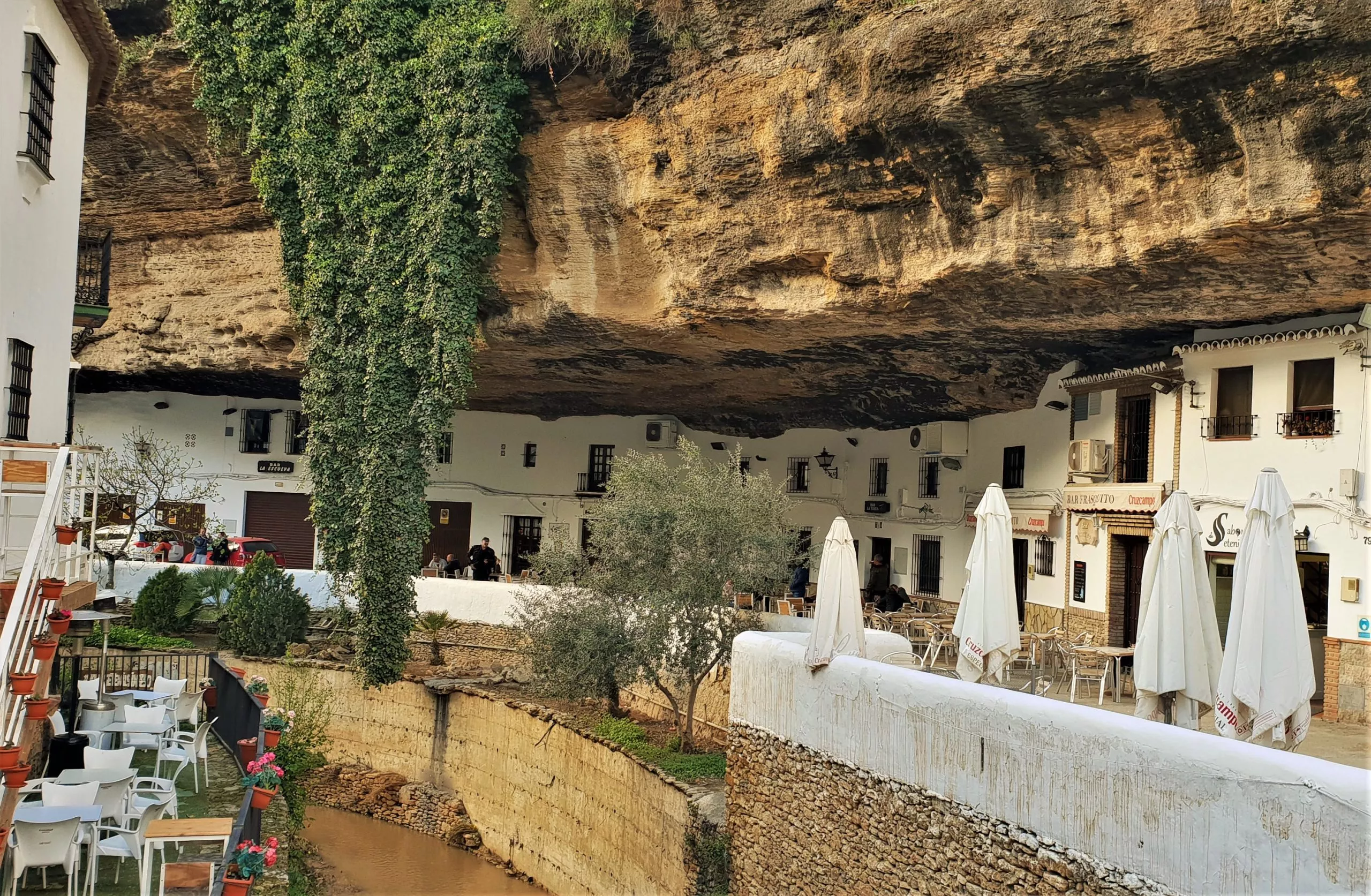
Unusual Andalusia: discover the most surprising and wonderful places in southern Spain.
